- You are here:

Where To See Hippos in Africa – The 12 Best Places To Go
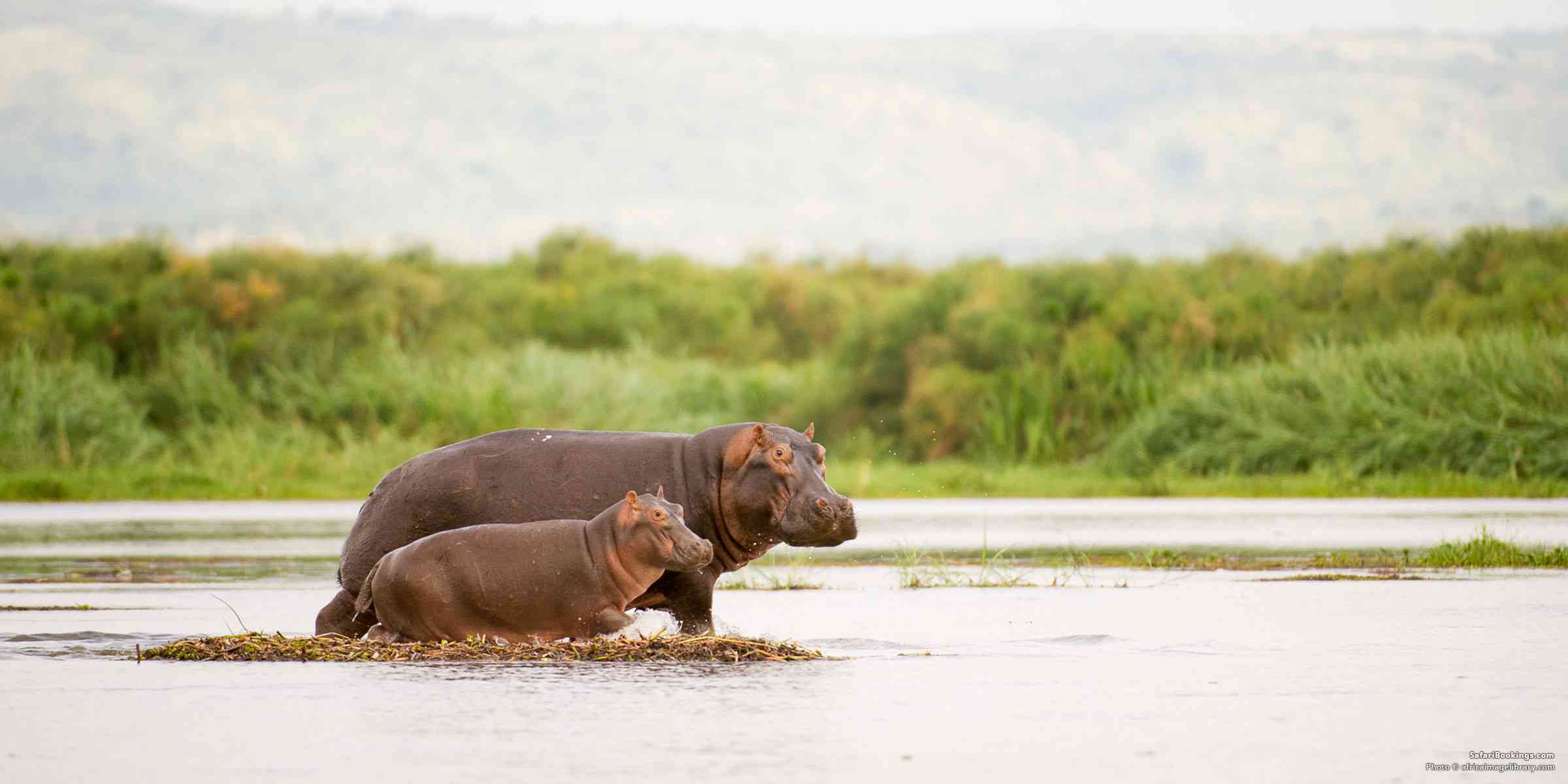
Philip is a renowned Africa expert and author of the Bradt guide to East African Wildlife.
There’s more to an African safari than ticking off the Big Five, which consists of lion, leopard, buffalo, elephant and rhino. Most safari destinations host a wide variety of other fascinating creatures. These include the hippopotamus, or hippo, a bulky water-loving ungulate (hoofed mammal) whose Greek name translates as ‘river horse’.
Weighing in at 1,500kg/3,300lb, hippos are easily recognized by their barrel-shaped bodies, cavernous mouths, fearsome teeth and custom of spending long daylight hours submerged in rivers or lakes. No African safari would be complete without the distinctive sound of hippos grunting and snorting. And if you’re wondering where to see (and hear) hippos in Africa, here we introduce you to some of the best places to encounter them.
1. Katavi National Park, Tanzania

Obscure Katavi National Park, in the far west of Tanzania, attracts a tiny fraction of the visitor numbers associated with the likes of Serengeti National Park. It is also arguably the very best place to see hippos in Africa, particularly toward the end of the Dry season, when hundreds upon hundreds of individuals might gather in one pool. This often leads to dramatic territorial disputes that frequently involve vicious headbutting, clashing teeth and bloody injuries.
- Best time to see hippos in Katavi: Hippo concentrations are most impressive from August to October, at the end of the Dry season
Katavi Tours
2. Okavango Delta, Botswana
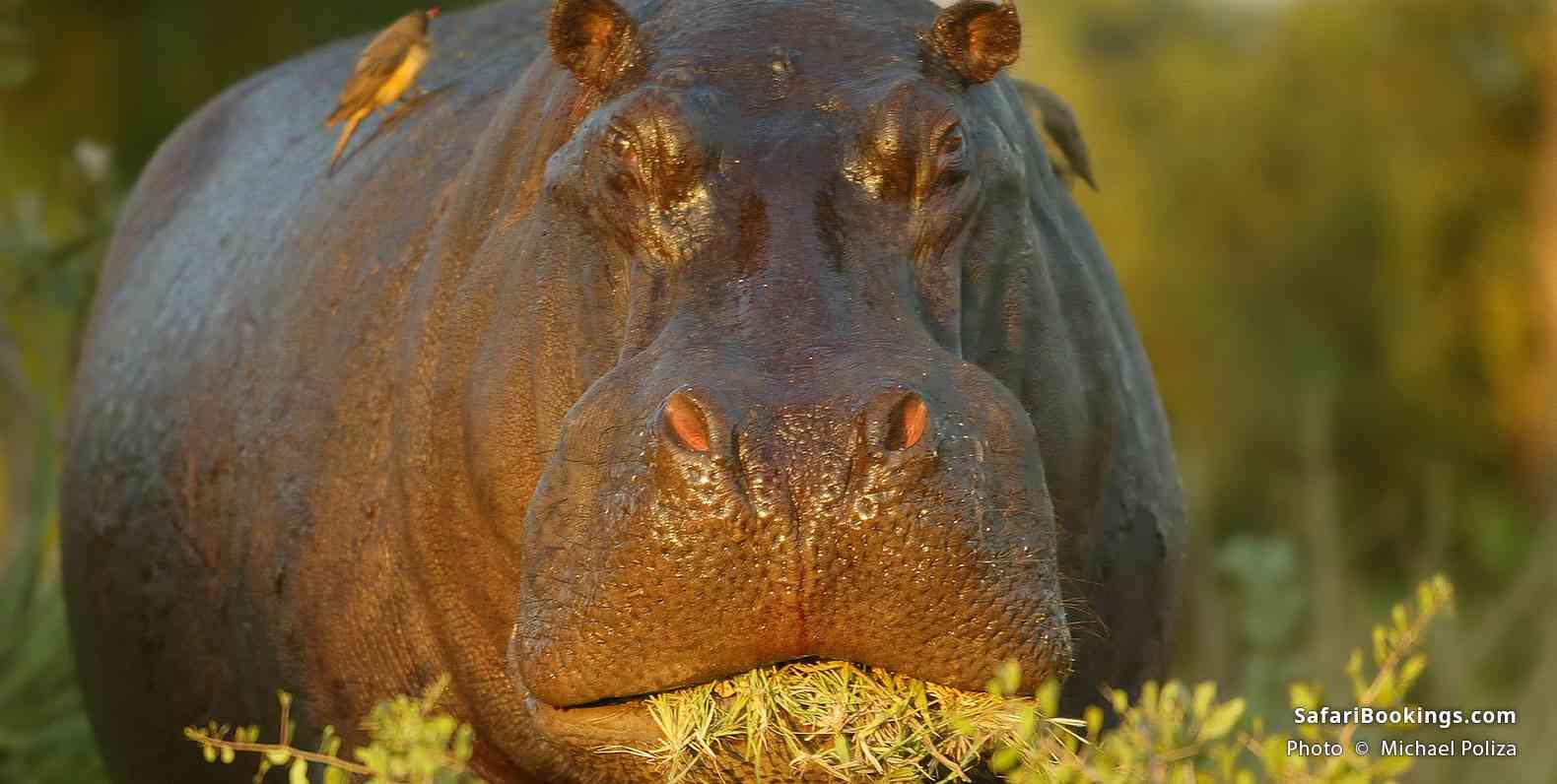
The world’s largest inland delta comprises 22,000km²/8,494mi² of permanent and seasonal wetlands fed by the Okavango (Kavango) River as it drains into the sandy Kalahari soils. Unsurprisingly, the Okavango is home to one of Africa’s largest hippo populations, and you’ll see plenty as you’re poled through the Delta’s channels in a mokoro (dugout canoe).
- Best time to see hippos in the Okavango: Wildlife is most abundant between July and October, but the Delta can be visited at any time, and hippo sightings are not strongly seasonal
Okavango Delta Tours
3. Queen Elizabeth National Park, Uganda
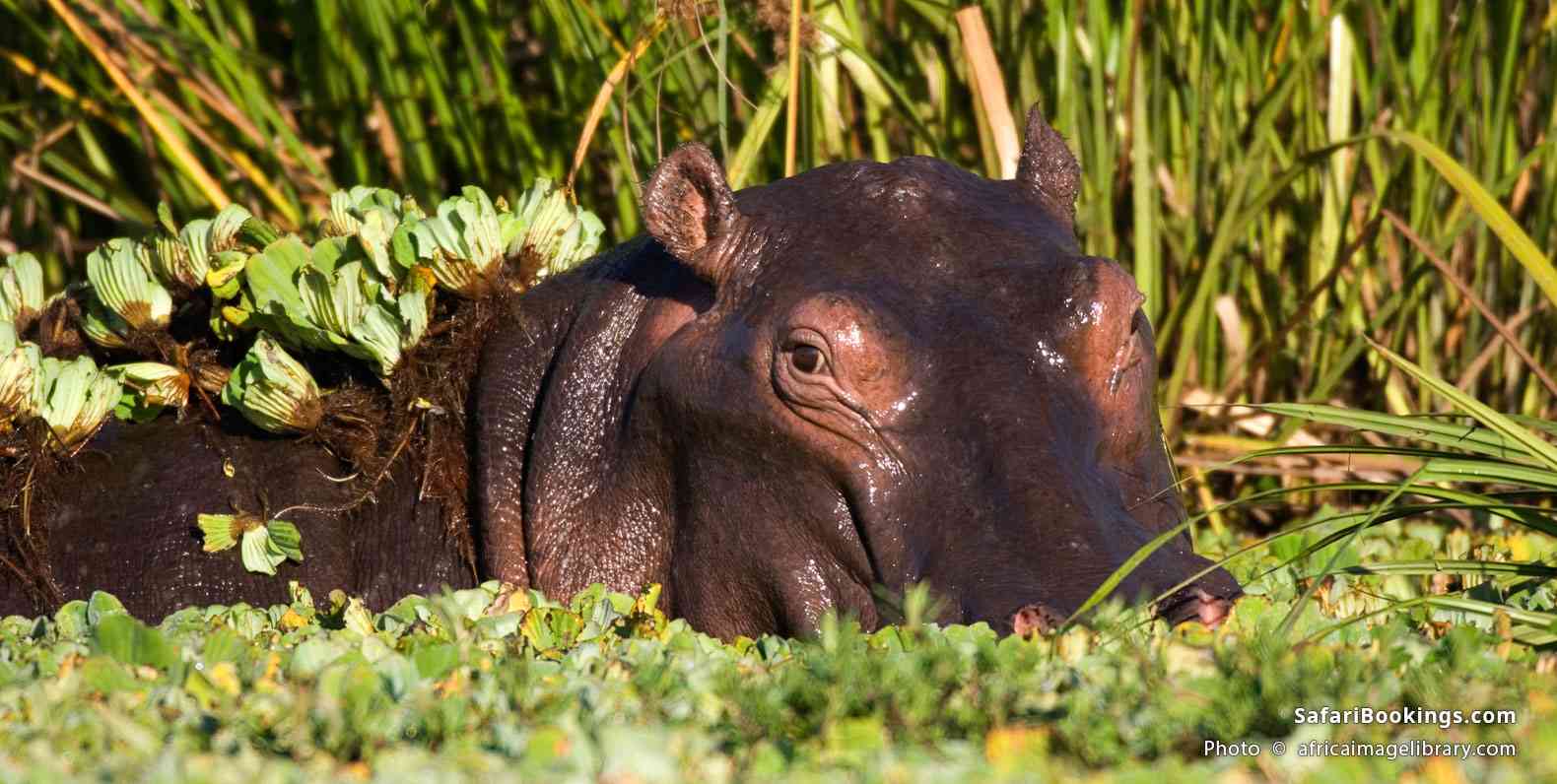
A safari to the diverse mosaic of savannah and wetland habitats of Queen Elizabeth National Park (QENP) is easily combined with gorilla trekking in the jungle of nearby Bwindi Impenetrable National Park. A highlight of QENP is a boat trip on the scenic Kazinga Channel, which is one of the best places in Africa to see hippos, along with elephants, buffalo and many different waterbirds.
- Best time to see hippos in QENP: Boat trips are available and hippos are present all year round. Most people time their visit around the peak gorilla trekking months of June to August and December to February.
Queen Elizabeth NP Tours
4. Liwonde National Park, Malawi
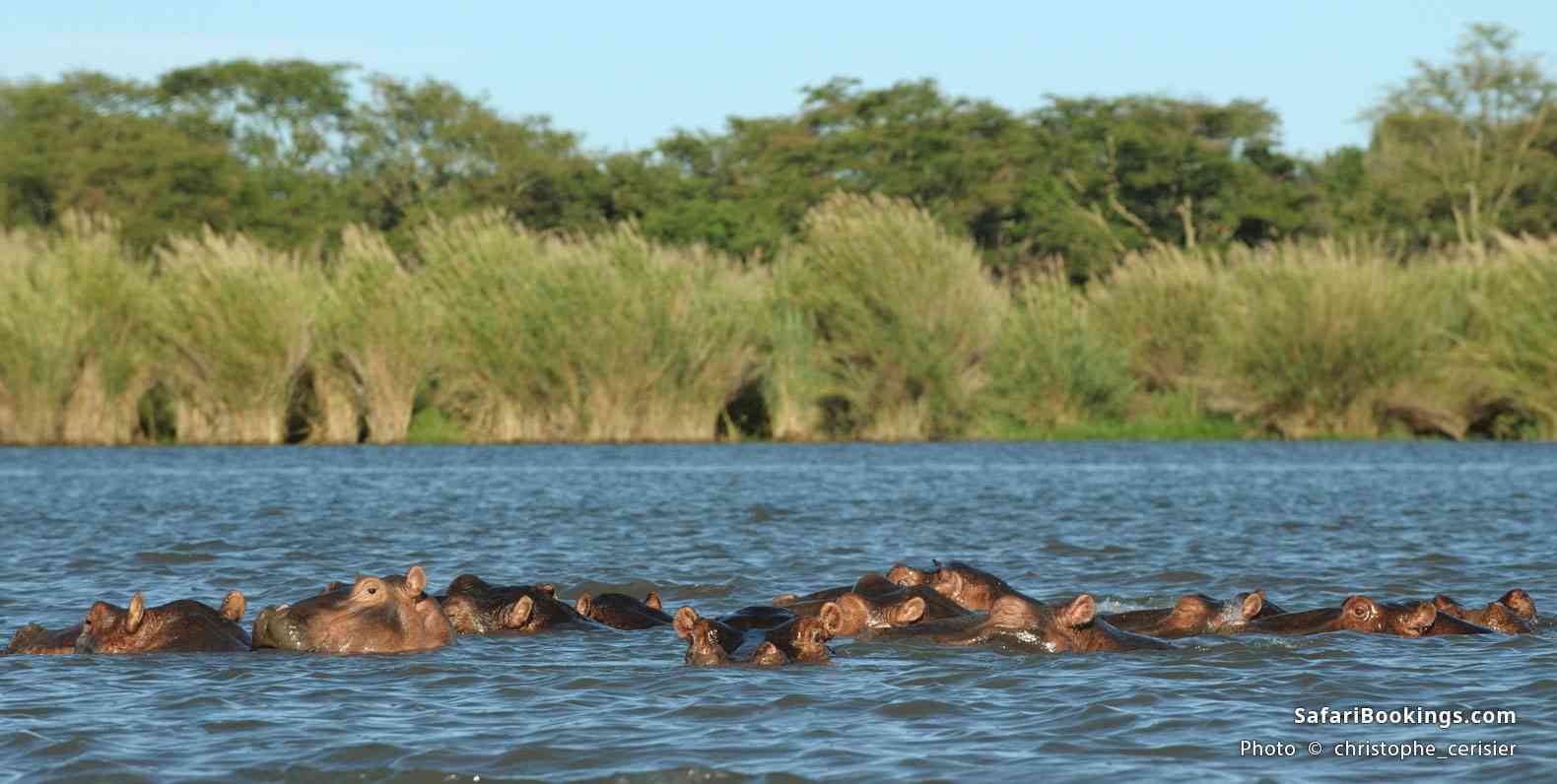
Underrated Liwonde National Park is a Big Five safari destination dominated by the Shire River as it flows south from Lake Malawi to its confluence with the Zambezi. Boat trips on this wild African waterway are a real treat. It hosts a quite extraordinary density of hippos and offers great elephant viewing and bird watching.
- Best time to see hippos in Liwonde: Hippos will be there whenever you visit, but general wildlife viewing is best from July to October
Liwonde Tours
5. iSimangaliso Wetland Park, South Africa

South Africa’s third-largest park, iSimangaliso Wetland Park protects a stunning 280km/170mi stretch of coastal wilderness running south from the border with Mozambique. The gateway village of St Lucia is the only settlement in South Africa where hippos regularly walk down the main road at night, undeterred by the gaping tourists in the restaurants and bars. Even if you miss out on this bizarre phenomenon, you should see plenty of hippos on a boat trip on the bordering St Lucia Estuary.
- Best time to see hippos in iSimangaliso: Hippos can be seen in St Lucia Estuary throughout the year
iSimangaliso Tours
6. South Luangwa National Park, Zambia
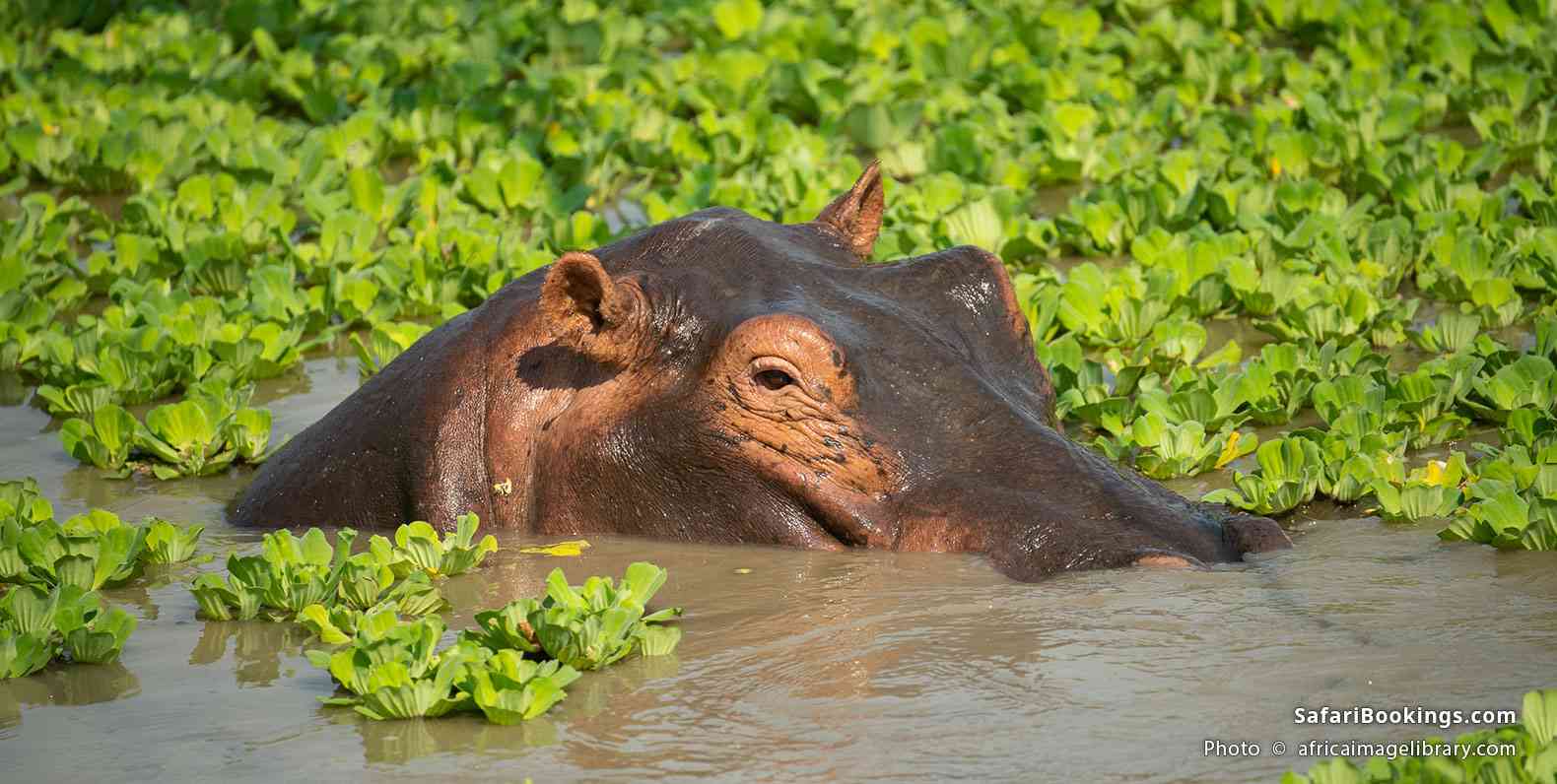
Zambia’s best-known safari destination offers great elephant, lion and leopard viewing, but the waterway for which it is named is also one of the best places in Africa to see hippos. As with Katavi, hippo viewing can be phenomenal at the end of the Dry season when large numbers gather in the river’s few remaining pools.
- Best time to see hippos in South Luangwa: July to October offer peak wildlife viewing. This is also when the Luangwa River is lowest and you’re likely to see large hippo concentrations.
South Luangwa Tours
7. Akagera National Park, Rwanda
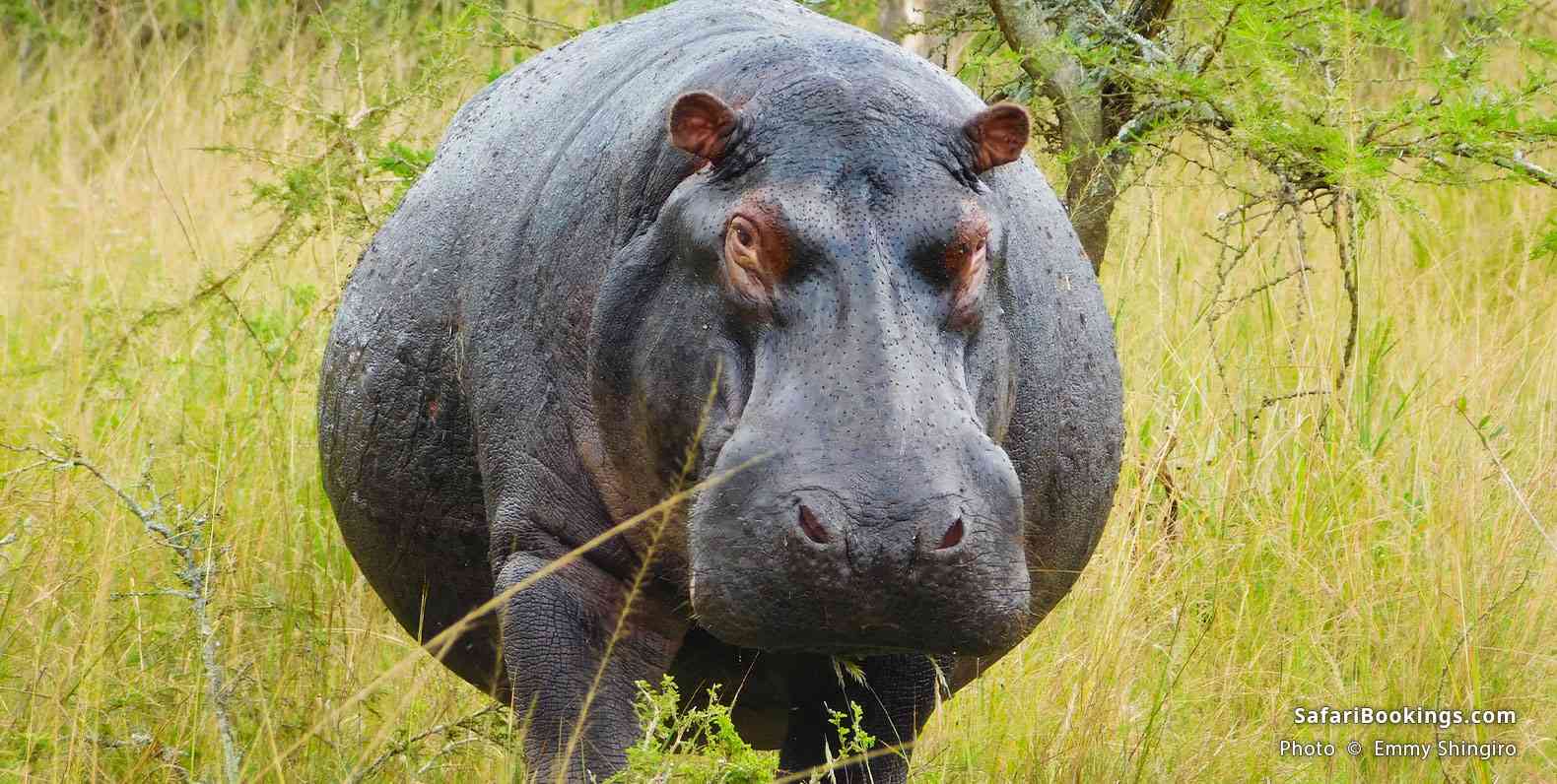
Rwanda’s only Big Five safari destination incorporates a beautiful wetland complex fed by the Akagera River on the border with Tanzania. Hippo sightings are a near certainty on boat trips on Lake Ihema, or from Lake Hago’s so-called Plage des Hippos.
- Best time to see hippos in Akagera: Hippos can be seen throughout the year, but if you’re combining a safari with gorilla trekking elsewhere in Rwanda, aim for June to September or mid-December to mid-February
Akagera Tours
8. Kruger National Park, South Africa

South Africa’s flagship Big Five destination is great for most iconic safari creatures, including hippos, which can be seen in all permanent rivers and larger dams.
- Best time to see hippos in Kruger: Wildlife viewing is best from June to September. However, Kruger is less seasonal than most safari destinations thanks to its well-maintained surfaced roads, so hippos can be seen at any time of year.
Kruger Tours
9. Murchison Falls National Park, Uganda
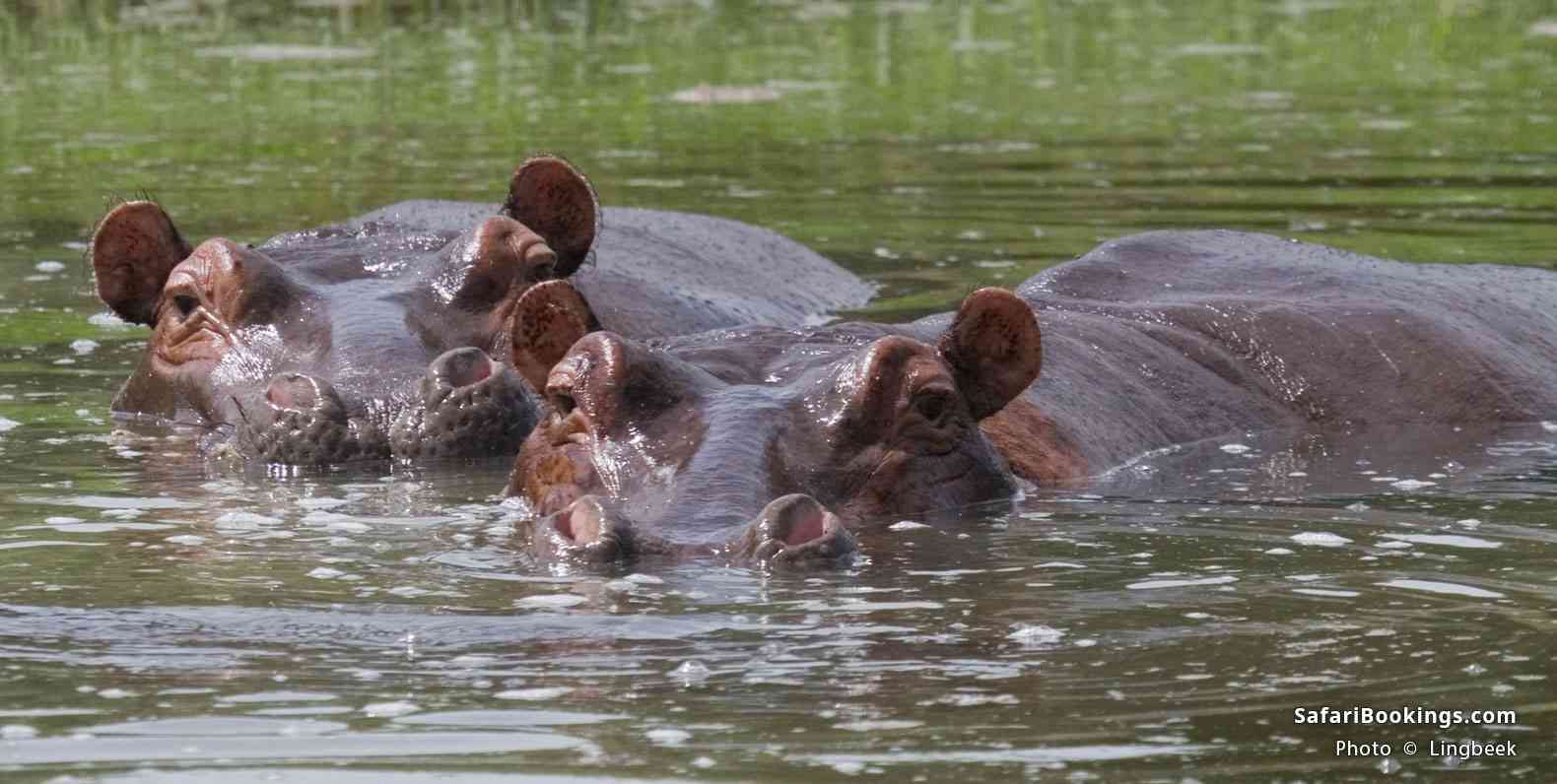
Uganda’s largest park is home to East Africa’s most spectacular waterfall, formed by the Nile as it funnels through a narrow crack in the Rift Valley escarpment. Boat trips to the base of this explosive waterfall offer great wildlife viewing, and you’re sure to see several pods of hippo basking in the shallows of the world’s longest river.
- Best time to see hippos in Murchison Falls: This is a year-round safari destination and hippo sightings are not greatly affected by season
Murchison Falls Tours
10. Nyerere (Selous) National Park, Tanzania
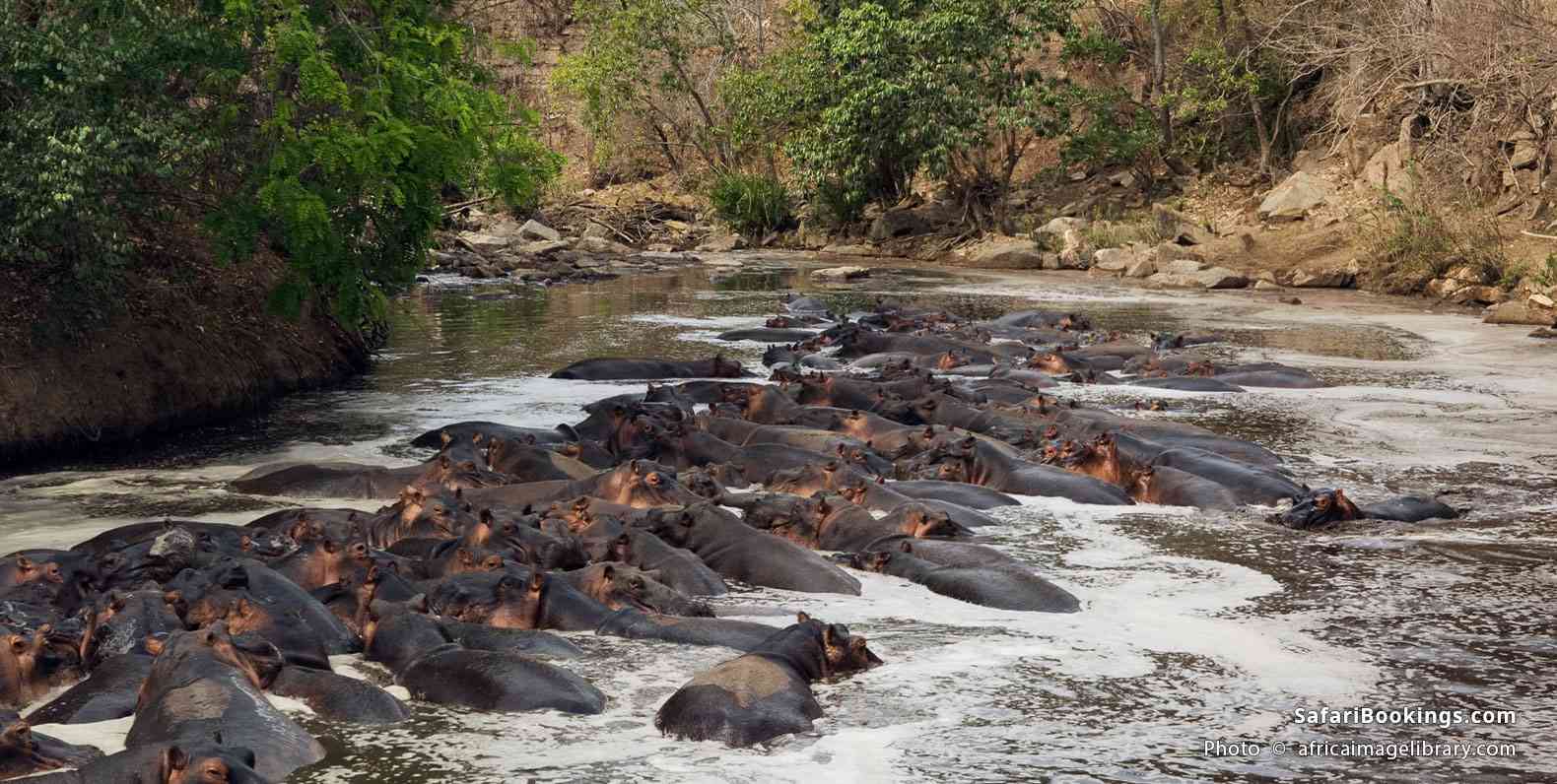
Tanzania’s largest national park is bisected by the country’s longest river. This is the Rufiji, a classic African waterway whose wide sandy course is lined by tall borassus palms and lush forest. This atmospheric stretch of river reputedly hosts Africa’s densest hippo population, and you’ll see plenty of these aquatic giants over the course of a single boat trip, along with elephants, giraffes and some impressively large Nile crocodiles.
- Best time to see hippos in Nyerere: The Dry season, from June to October, is the best time to visit and look for hippos
Nyerere Tours
11. Lower Zambezi National Park, Zambia
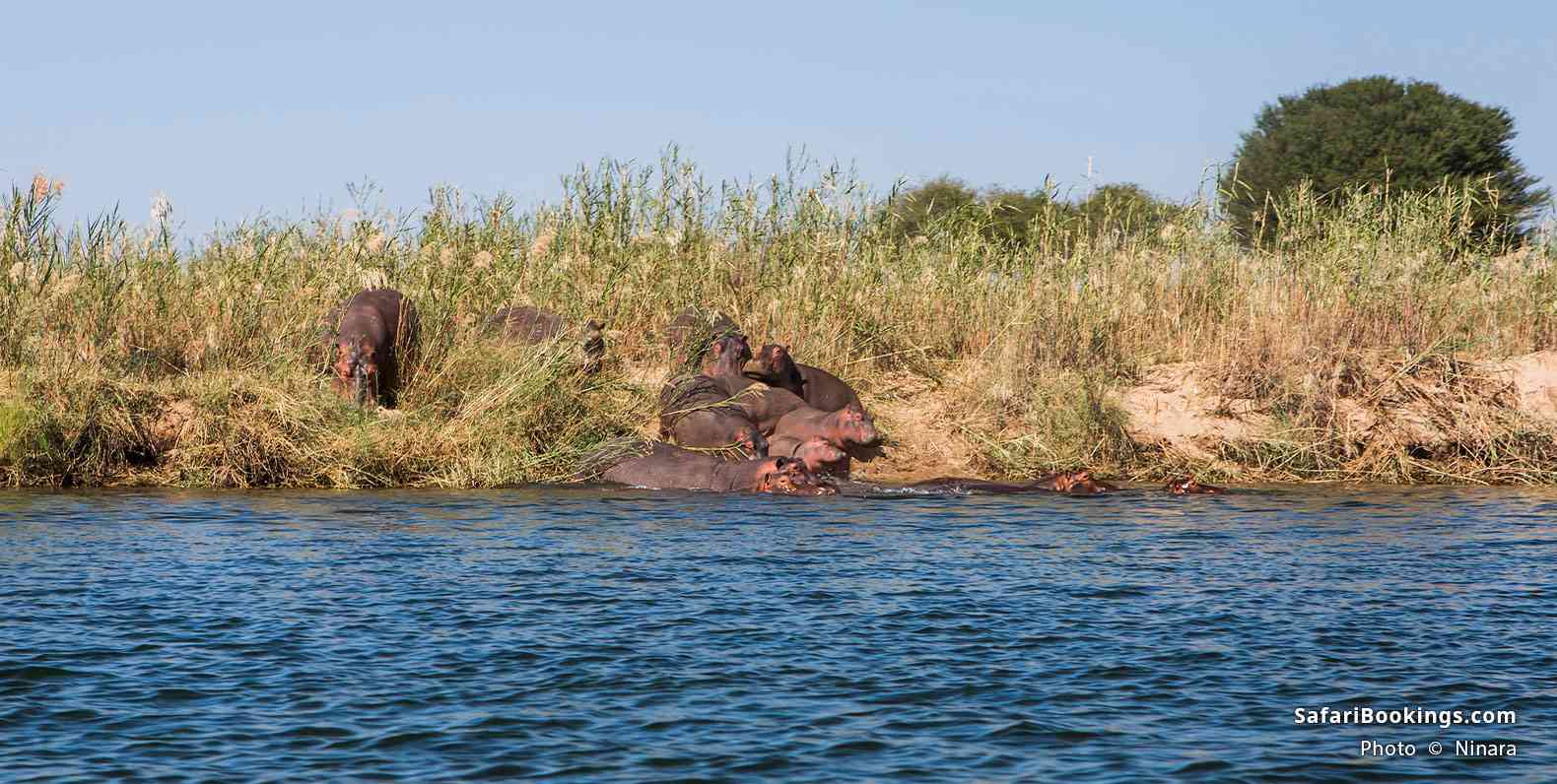
Situated on the north bank of the Zambezi as it flows along the border with Zimbabwe, this Zambian national park offers Africa’s best self-propelled canoe safaris. Close-up encounters with hippo are pretty much guaranteed, and because the canoes are so low on the water, they offer a great vantage point for watching any action.
- Best time to see hippos in Lower Zambezi: Hippo viewing on the Zambezi isn’t seasonal, but canoeing most certainly is. The best time to visit is between July and October.
Lower Zambezi Tours
12. Mana Pools National Park, Zimbabwe
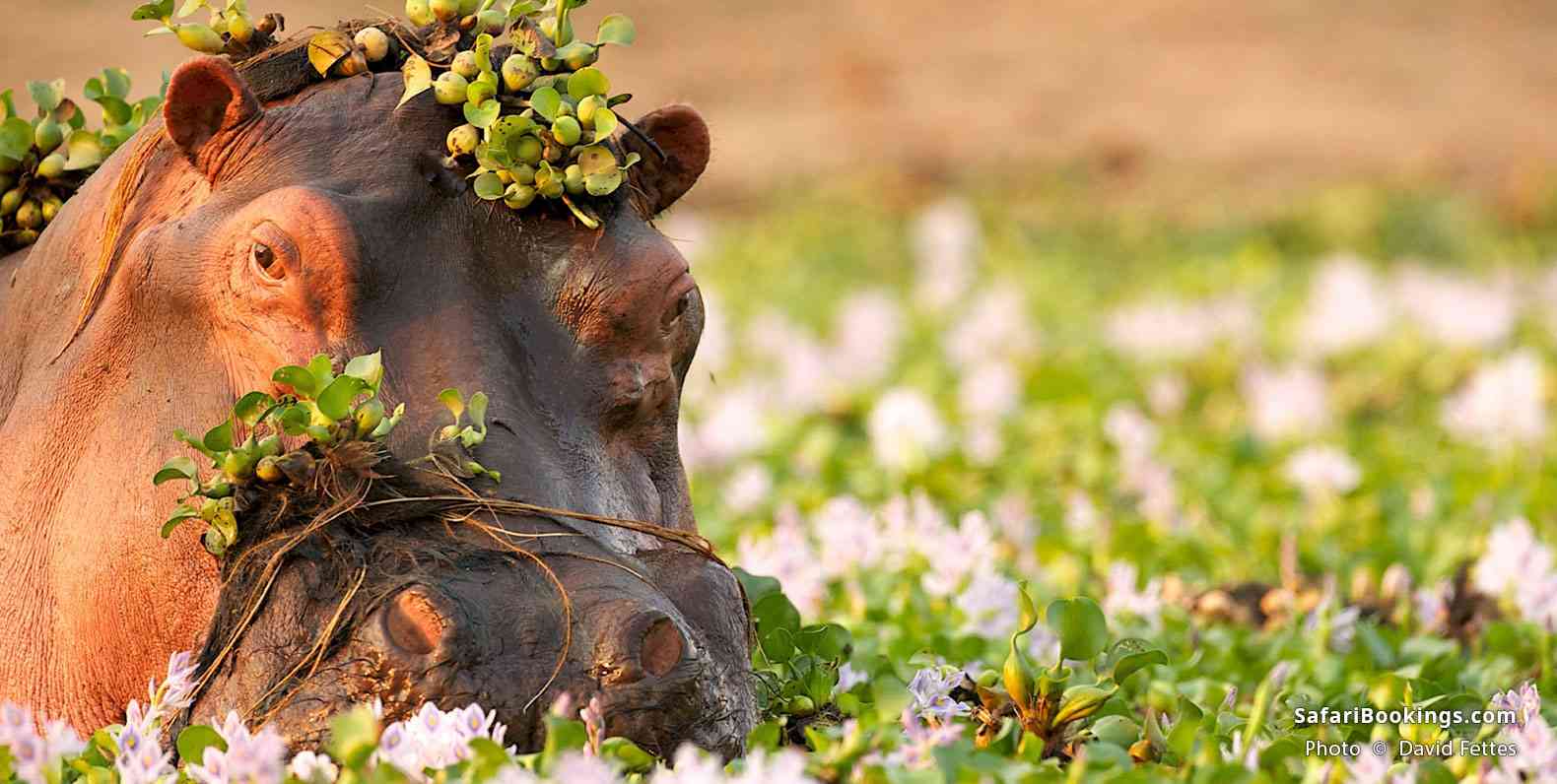
This Zimbabwean counterpart to Lower Zambezi lies on the opposite side of the same river and is equally productive for hippo viewing. Canoe trips are available, but the main specialty at Mana Pools is walking safaris, which often yield close-up encounters with hippos and other heavyweights such as lions and elephants.
- Best time to see hippos in Mana Pools: Wildlife viewing is best from June to October. The Zambezi floodplain becomes waterlogged and is difficult to visit between December and March.
Mana Pools Tours
Want To Go on an African Safari?
Click on the button below to compare African safaris offered by top-rated tour operators.
9,703 African Safaris
About SafariBookings
SafariBookings is the largest online marketplace for African safari tours. Easily compare offers from top-rated tour operators. Make decisions like a pro by using our 104,001 reviews and 223 destination guides. More About Us
Safaris by Type
- Luxury Safaris
- Budget Safaris
- Gorilla Trekking
- Chimp Trekking
- Family Safaris
- Private Safaris
- Group Safaris
- Photo Safaris
- Overland Tours
- Camping Safaris
- Fly-in Safaris
- Walking Safaris
- Birding Safaris
- Self-drive Safaris
- Canoe Safaris
Most Popular Blog Posts
- Best Time for African Safari
- Best Safari in South Africa
- Family Safari in South Africa
- African Safari Tips
- Game Reserves Near Cape Town
- What to Pack for a Safari
- Best African Safari Parks
- Top 5 Best African Honeymoon Safaris
- Top 5 Best Tanzania Family Safaris
- Best Places to See Cheetahs in Africa
- How Much Does an African Safari Cost?
- Best Places To Visit In Africa in 2024
Blog Categories
African safari tours.

10-Day Safari (Including Serengeti) & Zanzibar Extension
$3,760 to $4,800 pp (USD)
Tanzania: Private tour Mid-range Lodge & Tented Camp
You Visit: Arusha (Start) , Lake Manyara NP, Ngorongoro Crater, Central Serengeti, Serengeti NP, Zanzibar (End)
Unlimited Expeditions: The Soul of Tanzania
4.9 /5 – 440 Reviews

7-Day Tarangire, Serengeti, Crater & Zanzibar Extension
$2,092 pp (USD)
You Visit: Arusha (Start) , Tarangire NP, Serengeti NP, Ngorongoro Crater, Zanzibar (Beach) , Zanzibar Airport (End)
Kiboko Land Adventures
5.0 /5 – 22 Reviews

7-Day Tanzania Special Luxury Safari in the Wilderness
$3,190 pp (USD)
Tanzania: Private tour Luxury Lodge & Hotel
You Visit: Arusha (Start) , Tarangire NP, Serengeti NP, Ngorongoro Crater, Lake Manyara NP, Arusha (End)
Meijo Safaris
4.9 /5 – 149 Reviews
Savannah Hippo Safaris

- See all photos

Similar Experiences

Most Recent: Reviews ordered by most recent publish date in descending order.
Detailed Reviews: Reviews ordered by recency and descriptiveness of user-identified themes such as wait time, length of visit, general tips, and location information.
Savannah Hippo Safaris - All You Need to Know BEFORE You Go (2024)

[breadcrumb]
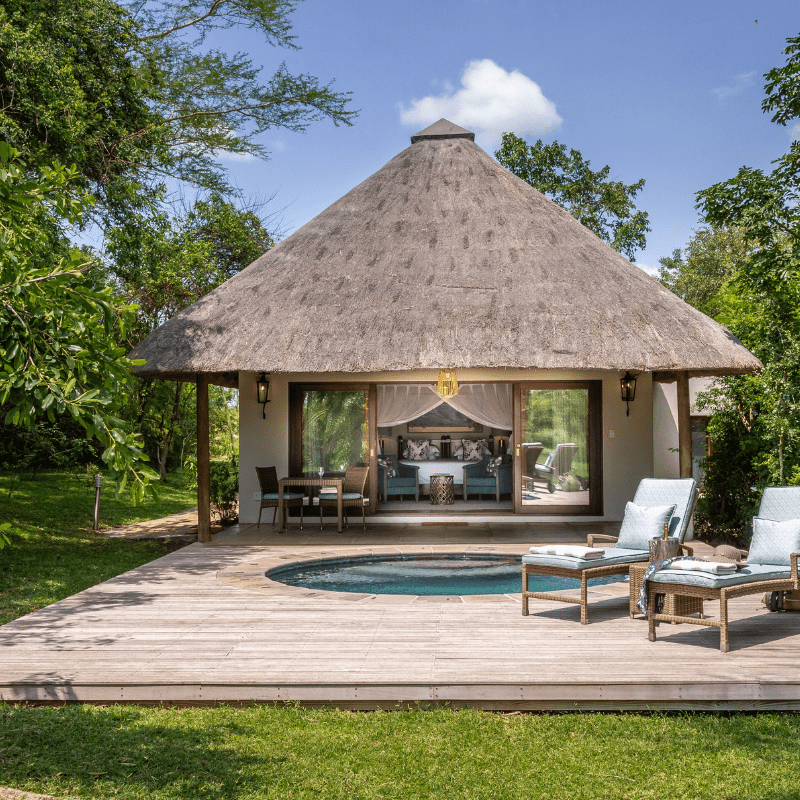
Savanna Lodge Suite
Sabi sands private game reserve.
Personalised and intimate style of luxury tented Safari in the world famous Sabi Sands Private Game Reserve. This acclaimed lodge makes you feel at home away from home.
In an area studded with dams that attract large herds of game, and traversing more than 10 000 hectares of prime bushveld, a Savanna safari provides exceptional opportunities to see the ‘Big 5’ – lion, leopard, elephant, buffalo and rhino – as well as cheetah, wild dog, hippo, crocodile, an abundance of general game and over 400 bird species. The emphasis at Savanna is, first and foremost, on the safari experience, on the activities of the many rare and beautiful creatures encountered.
Our five-star luxury lodge offers nine exquisite suites. Seven of our suites have tented roofs, blending the elegance of a by-gone colonial era with all the convenience of modern facilities.
Each suite offers guests private patios, plunge pools and outdoor showers, as well as air-conditioned interiors, minibars stocked with inviting treats, a coffee machine and décor that epitomises the elegance of understated luxury.
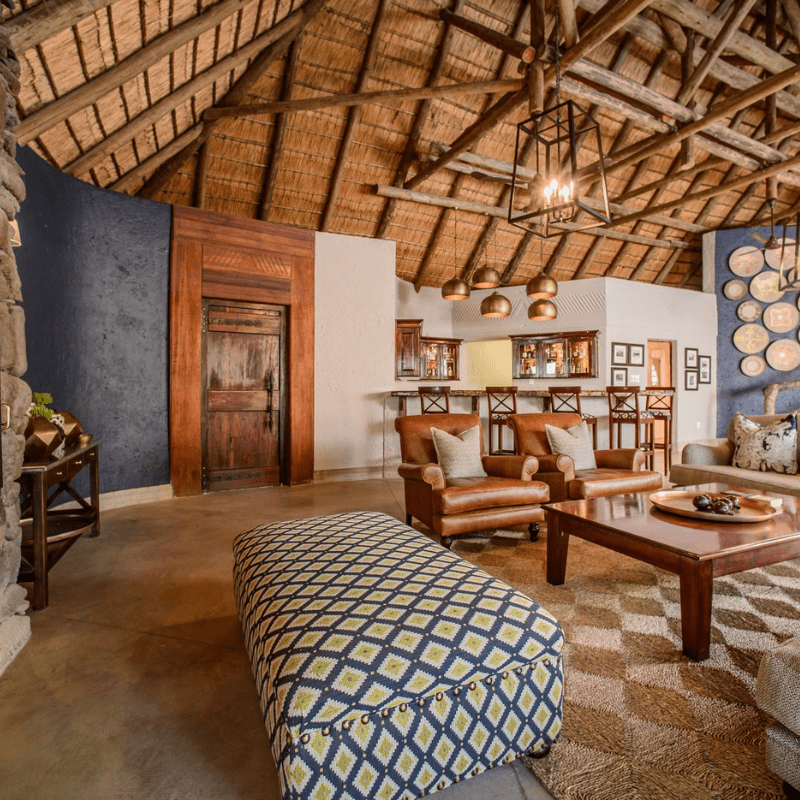
Luxury suites
On the riverbed
Fine dining
Wine cellar
Air-conditioned
All year round travel
- What to Bring & Wear
Whats Included:
- Accommodation in a private suite
- 2 Daily game drives
- Local soft-drinks, beer and spirits
- Bush walk optional
Whats Excluded:
- Flights and transfers
- Spa treatments
- Travel insurance
- Safari Shop & Curio items
- A good bush hat for summer months or warm beanie in winter
- Comfortable shoes
What to Wear:
Book your luxury dulini getaway now, when would you like to travel.
- Date of Arrival * DD slash MM slash YYYY
- Date of departure * DD slash MM slash YYYY
- No. Adults * Please enter a number from 1 to 20 .
- No. Children Please enter a number from 0 to 20 .
- Ages of children (seperated by commas)
- Additional comments
Your details:
- Name and Surname * Name Surname
- Email address * Enter Email Confirm Email
- Phone This field is for validation purposes and should be left unchanged.
Need a transfer, drop us your information here
We will get back to you shortly, tel: +27 (0) 83 556 7249 or +27 (0) 83 593 8184.
- Name First Last
- A short message about a specific Safari?

- Sunrise Safari
- Full Day Safari
- Sunset Safari
- Photographic Safari
- Sunrise Walk & Drive
- Child friendly Safari
- Mammal Safari
- Botanical Safari
- 2 Day Southern Kruger
- 3 Day Central Kruger
- 4 Day Explorer Safari
- 4 Day Northern Kruger
- 4 Day Kruger Train Hotel
- 5 Day Northern Kruger
- 6 Day Complete Kruger
- 8 Day Ultimate Kruger Safari
- Privately Guided Safaris
- Full Day Birding
- 3 Day Birding Safari
- 4 Day Birding Safari
- 5 Day Birding Safari
- Birds of Kruger
- 1 Day Photographic Safari
- 4 Day Photographic Safari
- 7 Day Photographic Safari
- 10 Day Photographic Safari
- Langa Langa Camp
- Kruger Park Safari Villas
- Dulini – Sabi Sands
- Savanna – Sabi Sands
- Bateleur – Timbavati
- Shalati Train – Kruger
- Cape of Good Hope
- Cape Winelands
- Hermanus & Whales
- Panorama Highlights
- Panorama Waterfalls
- Panorama Views
- Panorama Heritage Trail
- Meet Andrew
- Guiding Team
- Safari Vehicles
- Terms & Conditions
- Guest Reviews
- Safaria Blog
- Kruger Park Map
- Kruger Park History
- Kruger Park Camps
- Kruger’s Wildlife
- Krugers Parks Trees
- Krugers Wild Flowers
- Kruger Park Geology
- Kruger Park – FAQs

Authentic Luxury
African safari experience, just a little different, savanna lodge.
An exclusive 5-star lodge, Savanna is situated in the internationally famous Sabi Sand Reserve within the greater Kruger National Park Conservancy. Our internationally acclaimed lodge offers an exclusive, personalised and intimate safari experience to our guests, with a unique style of tented accommodation.
Our lodge lies in an area where ‘Big 5’ sightings are so frequent, it is not unusual to see lion, leopard, elephant, buffalo, and rhino in a single game drive. Our specially designed game viewing vehicles and highly trained guides with a vast knowledge of the African bushveld, take guests on close and intimate encounters with a large variety of wildlife. Numerous nearby dams and a series of waterholes in front of the lodge attract many species, especially in the dry winter months when elephants are daily visitors.

- Savanna Suite

- Executive Suite

- Luxury Suite
Suited to you
Exclusive facilities.
Relaxing in the comfort of the public lounge with its spacious patio, or at the main pool looking out over lush gardens and floodlit waterhole, our guests are frequently treated to fantastic views of birds and game drinking and bathing.
The loft above the lounge makes a pleasant nook for a quiet game of chess as well as a bird’s eye view of the waterhole, while an adjoining library provides wireless broadband internet access and offers guests the means to transfer digital photographs, freshly captured on their safari, onto CD or DVD.
Our fully-stocked wine cellar and bar ensure your thirst is always quenched. Enjoy a meal whilst sitting around our traditional Shangaan boma, and purchase a precious memento of your experience at our well-stocked curio shop.
Work up a sweat in our fully-equipped gym with the bush right at your doorstep, or enjoy an exquisite massage treatment in the privacy of your suite.
Enjoy an experience that is just a little different…

True Safari Experience
In an area studded with dams that attract large herds of game, and traversing more than 10 000 hectares of prime bushveld, a Savanna safari provides exceptional opportunities to see the ‘Big 5’ – lion, leopard, elephant, buffalo and rhino – as well as cheetah, wild dog, hippo, crocodile, an abundance of general game and over 400 bird species. The emphasis at Savanna is, first and foremost, on the safari experience, on the activities of the many rare and beautiful creatures encountered.
Game Drives & Walks
A true taste of africa.
Experienced and dedicated game rangers and trackers impart their amazing knowledge of the natural world, allowing guests to unobtrusively enter the lives of the largest and smallest creatures. From the mist shrouding the bush at dawn till the blazing sun sets behind distant mountains, the magic of a Savanna safari will provide incredible photographs and unforgettable memories.

To Our Newsletter
Subscribe to our newsletter.

- About Our Suites
- Exceptional Food & Wine
- World-Class Facilities
- Community Projects
- Wildlife Blog
- Community Blog

wildlife guide to the hippopotamus
The hippo is one of the most charismatic animals on the African plains. Forget the crocodiles, the hippo is the undisputed boss of African rivers . And it doesn’t just reign in the river; hippos have been known to kill lions. Here are some quick details you should know about the river boss.
The hippo is a large and round ungulate that prefers spending most of its time in the water. While the word hippopotamus is Greek for “River Horse,” hippos and horses are not closely related. In fact, the closes living relatives to the hippo are whales, dolphins, and pigs.
Hippos are the third-largest land mammals, after elephants and rhinos . In ancient Egypt, the hippo was regarded as the female deity of pregnancy . Unfortunately, these animals are not held in the same regard today and are threatened by human encroachment and poaching. Fortunately, hippos continue to thrive in some parts of sub-Saharan Africa.
This article will detail everything that you need to know about this majestic beast. Read on.
Skip to: Characteristics , Range & habitat , Diet , Behaviour , Fun facts , Video

Latin name: Hippopotamus amphibius
Group name: Crash, Bloat, Herd, Pod, Dale
Size: 1.5 meters tall and 3.5 meters long
Weight: Up to 3,200 kg
Hippo characteristics
The hippo has an enormous head, a bulky, round body, and short stumpy legs with four toes each. The animal spots a short tail as well.
Large males average 3.5 meters in length and 1.5 meters in height and can weigh as much as 3,200 kg. Hippopotami display sexual dimorphism, which means that males are significantly larger than females (by up to 30 percent more).
Hippos are hairless, save for a few tufts of hair on their mouths. To make up for this vulnerability, they have a skin that can be up to 5 cm thick.
The mouth of a hippo is perhaps its most distinct feature. It can open up to half-a-meter wide, revealing 30 centimeter long tusks.
As an adaptation for an aquatic lifestyle, the hippo’s eyes, nostrils, and ears are situated high on its head to allow it to see, breathe, and hear while the rest of the body is submerged. During deep dives, the ears and nostrils fold shut to prevent water from rushing in.

Range & habitat
While the big and burly hippo that resides in sub-Saharan Africa is what comes to mind when the word hippo is mentioned, it has a smaller cousin known as the pygmy hippo ( Hippo liberiensis). This is a miniature hippopotamus – weighing a maximum of 275 kg – that resides in the jungles of West Africa. Nonetheless, it is very rare and is extremely shy.
The common hippo, on the other hand, resides in sections of Eastern, Central, and Southern Africa. As mentioned, hippos are aquatic creatures, which means that they live in swamps, rivers, and lakes. An aquatic environment is vital to a hippo for several reasons.
First off, the buoyance effect of water helps to support the animal’s massive weight. Secondly, the vegetation that grows around water bodies comprises the majority of a hippo’s diet. Additionally, hippopotami can be prone to overheating, and the water helps keep them cool.
You might find it interesting that female hippos give birth in the water. Fortunately, babies are born with an innate ability to swim.
Hippos are nocturnal herbivores. They leave their watery nests at dusk to graze, but they don’t wander too far away for safety purposes. However, when there is no food nearby, they will travel several kilometers in search of pasture.
These animals prefer grazing on grass, reeds, or small shoots. Hippos have thick, muscular lips that can be up to 50 cm wide, which makes them ideal for pulling up grasses. To maintain its massive size, a hippo can eat up to 40 kg of food in a single night.
Hippopotami tend to exit and enter their water pools from the same spot. If an individual wanders off too far, they will look for a small pool nearby to rest until nightfall.

Behaviour & lifestyle
Hippos are extremely social and form herds of up to 100 individuals. They are sedentary in nature, typically spending the entire day resting in the water and only coming out at dusk to feed. As mentioned, they are mostly active at night.
Herds usually congregate in the middle of pools and are led by females. Dominant males usually rest on the outer edges of pools, where they stand to guard the rest of the herd.
Males begin competing for dominance once they reach sexual maturity, which is usually at around seven years. Display of dominance is an interesting affair as it involves opening the mouth wide to show off tusks, dung showering, and roaring.
Dominant males do not take well to aggressive displays by juveniles or other males and will fight if they have to.
Fights are common during the dry season when rivers start drying up, and pools start becoming prime pieces of real estate. Fights involve clashing tusks and biting.
Hippos have a polygynous system of mating, where one male breeds with a group of females. They do not have a specific breeding season; nonetheless, most mating tends to occur between February and August. They have a gestation period of 240 days, and babies are usually born underwater.
Hippo calves will live beside their mothers until the age of 7 or 8. Males reach sexual maturity between the ages of 7 and 9, while females attain reproductive maturity between the ages of 8 and 10.
Fun hippo facts
- Hippos are the most dangerous animal in Africa , killing up to 500 people every year
- Despite their massive size, hippos can reach speeds of 30 km per hour
- The hippo’s large head accounts for a third of its body weight
- Many people believe (incorrectly) that hippo’s milk is pink !
Meet the hippopotamus
The enigmatic hippo is an animal that is best observed from a distance. This huge mammal will charge at the slightest provocation and can run faster than most humans. Nonetheless, they are docile for the most part.
Have you seen a hippo whilst on safari? Let us know in the comments below!
Read about more safari animals .
- San Diego Zoo: Hippopotamus
- Animal Planet Hippo Facts
- African Wildlife Foundation Fact Sheet: Hippopotamus
- Barklow, William E. “ Amphibious Communication with Sound in Hippos, Hippopotamus Amphibius .” Animal Behaviour 68.5 (2004): 1125–32. Print.
- Lewison, R., and J. Pluhácek. “ Hippopotamus amphibius .” The IUCN Red List of Threatened Species.e.T10103A18567364, 2017.
- Walzer, Chris, and Gabrielle Stalder. “ Chapter 59 – Hippopotamidae (Hippopotamus).” Fowler’s Zoo and Wild Animal Medicine, Volume 8. Eds. Miller, R. Eric, and Murray E. Fowler. St. Louis: W.B. Saunders, 2015. 584–92. Print.
Top countries for safaris
- Botswana safaris
- Kenya safaris
- Namibia safaris
- South Africa safaris
- Tanzania safaris
- Uganda safaris
Safari basics
- Safari animals
- How to find the right safari company
- When to go on safari
- What to take on safari
- Safari clothing – what to wear
- Safari rules & etiquette
- Wildlife spotting tips
Most read articles
- All about the ‘big five’ animals
- Collective nouns for animals
- Safari movies to watch before you go
- The world’s fastest land animals
- Apex predators
- 10 Fascinating African tribes
- The biggest animals in the world
- 17 Epic hybrid animals
- The world’s ugliest animals
- Why are flamingos pink?
Africa’s best game reserves
- Chobe National Park, Botswana
- Etosha National Park, Namibia
- Kruger National Park, South Africa
- Masai Mara National Reserve, Kenya
- Moremi Game Reserve, Botswana
- Okavango Delta, Botswana
- Serengeti National Park, Tanzania
Session expired
Please log in again. The login page will open in a new tab. After logging in you can close it and return to this page.
Birds on safari: 10 most common African birds in the savanna
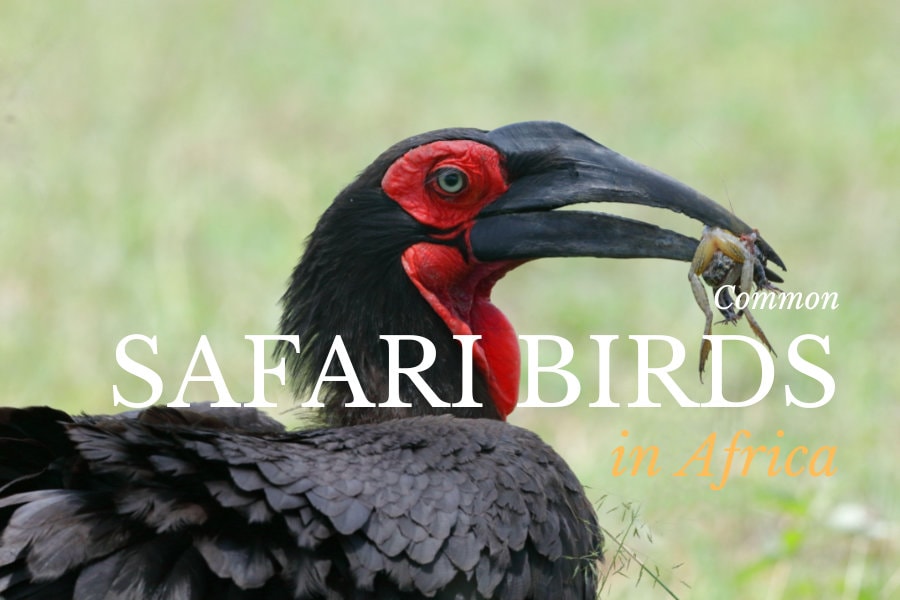
Most people don’t even consider seeing birds on safaris when planning their adventure in the wild.
Anyone who is planning a safari dreams of watching lions protect their territory, elephants charging through the forest, or a big cat hunt playing out beside a hippo-filled waterhole.
Unless you’re an avid birder, there’s a good chance that our winged friends aren’t very high on your agenda.
Despite their beauty and extravagance , the majority of people don’t find birds as exciting as the big stuff – most are more interested in wild dogs, cheetahs or leopards , among others.
However, witnessing birds on safari is always an unexpected highlight. This article shows you the top ten : classic species, what they sound like, and where you can encounter them.
If you’re already excited about birds on safari, then this article is an introduction to what you can find.
And if you’re thinking “birds in safari itineraries?” then this should change your opinion a little.
10 Common Safari Birds to See in the Savanna
Whether you’re hoping to spot small or giant African birds, safaris offer abundant opportunities to marvel at these stunning creatures.
Here are some incredible species to add to your birding bucket list.
1. African fish eagle

Undoubtedly Africa’s most striking symbol, and Zambia ’s national emblem, this is the ultimate bird to see on safari.
If you haven’t already guessed it by the name, their diet mainly includes fish . So you’ll likely find these large African birds near open water bodies .
The fish eagle is unmistakable with its white head and breast, chestnut belly and forewings, black under-wings, and white tail.
Male and female appear similar, but the female is generally larger .
Average size : 2.1-3.6 kg; 63-77 cm in length.
Call : Loud, piercing, cheerful yelp. ‘Kyow-kow-kow’ type. 🙂
Habitat : Aquatic: rivers, lakes, and dams – feeds on fish.
Range : Sub-Saharan Africa.
2. Helmeted guineafowl
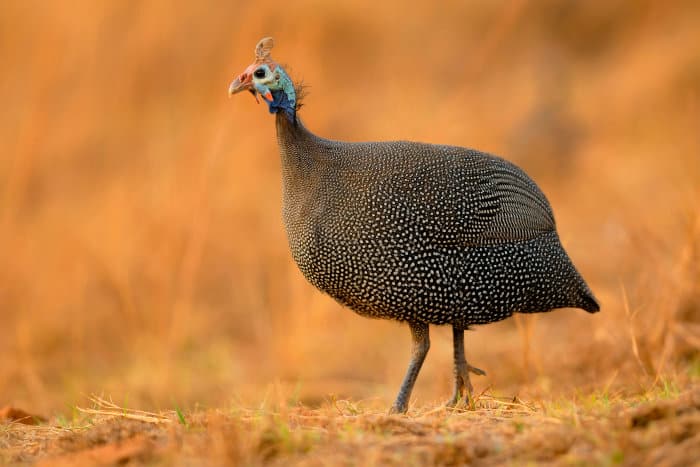
Not the most intelligent of creatures, but it is intriguing nonetheless. They are one of the most unique birds of the savanna, with several quirky traits.
The helmeted guineafowl has a ‘bead-like’ design with dark gray feathers and tiny white dots.
They boast bald faces and necks with striking blue-colored skin . Admittedly, they’re not at the top of the list of beautiful African birds .
Both helmeted guineafowl sexes have a casque on the head, though the male’s “helmet” is longer.
These guineafowls have an omnivorous diet , and while they can fly, they choose to walk unless they find themselves in danger.
Average size : 1.3 kg; 53-58 cm in length.
Call : ‘krrdii-krrdii-krrdii-krrdii’ .
Impressive, huh? Who would’ve thought in the first place that I, “Africa Freak” , could speak guineafowl language? 🙂
Disclosure – I’ve spent many mornings watching them roam outside my safari camp.
Habitat : All types of open and wooded grasslands + coastal forests.
Range : Most of Sub-Saharan Africa, except in rainforests and the Somali region.
3. Grey (southern) crowned crane
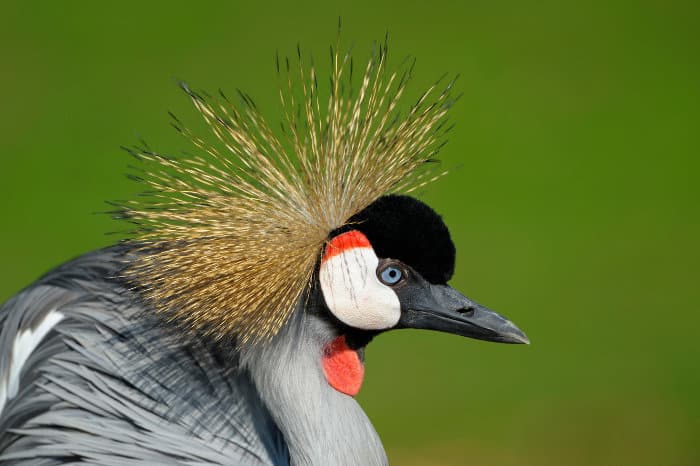
Highly characteristic of its stunning bristly crown , the grey crowned crane is a majestic bird. Safari goers wouldn’t want to miss the opportunity to catch a glimpse of this beauty.
You can find them in grassland and wetland areas in Africa. Unfortunately, the grey-crowned crane is an endangered species with a declining population.
They face threats such as the illegal removal of birds from the wild and habitat loss.
Average size : 3.5 kg; 100-110 cm in length.
Call : Trumpeting ‘may hem’ flight call (easily confused with the Norwegian black metal band).
Habitat : Grasslands, flooded plains, marshes, and agricultural land.
Range : Most of Eastern and Southern Africa.
4. Lilac-breasted roller
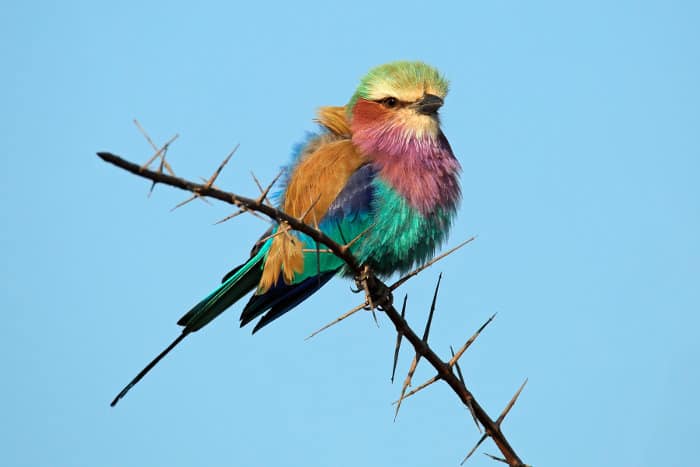
A stunningly exquisite bird that you are most likely to encounter during a game drive. “Rolls” are on display and explode into a myriad of colors when giving chase.
The lilac-breasted roller is a multicolored beauty of the roller family. Many are familiar with birds from this family for their ability to perform aerial acrobatics in flight.
Lilac-breasted rollers can breed in flight too, and they are monogamous birds believed to mate for life.
If you’re patient enough when having a picnic, say on the Serengeti , this bird may perch on your safari vehicle.
For those hoping to catch sight of birds in Kenya, safari experiences should include searching for this fascinating species.
Average size : 110 g; 36-38 cm in length.
Call : A loud guttural rak-rak sound.
Habitat : Grasslands and wooded acacia savannas . The lilac-breasted roller perches conspicuously and habitually on termite mounds, high treetops, or telephone wires from where it scans the ground for large insects.
Range : The bird’s range coincides with the great wildlife corridors of Eastern and Southern Africa.
5. Southern ground hornbill
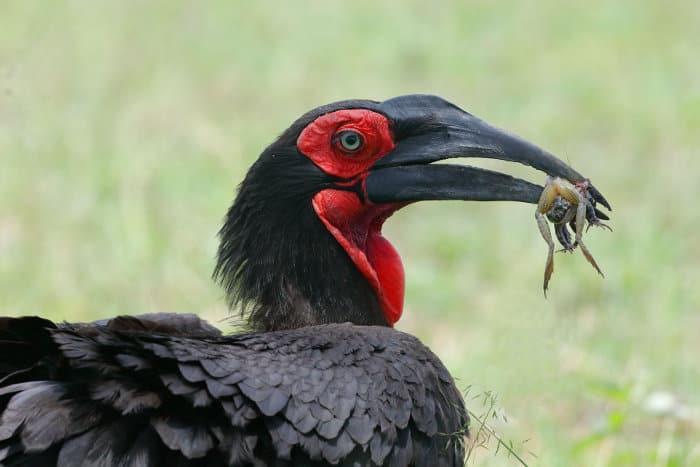
These are the turkey birds of the savannah. With its jet-black feathers and vibrant red patches , the southern ground hornbill looks a little like a turkey or vulture.
You can distinguish the female from the male, thanks to its blue throat patch .
Not necessarily a looker, but you know you are on safari when a southern ground hornbill makes an appearance.
Average size : 3.8 kg; 100 cm in length.
Call : A loud, booming duet ‘oomph-oomph,’ given on early mornings.
Habitat : Savanna, woodlands, and grasslands.
Range : Central Kenya and Southern Congo, south to Central Botswana and Eastern South Africa .
6. African hoopoe
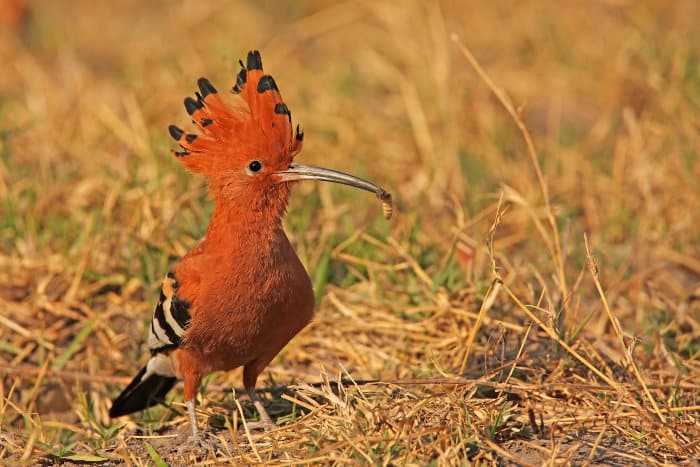
The African hoopoe is a medium-sized bird that flies impressively, like a giant butterfly with pied wings. It is one of the only African bird species with a “punk-like” crest and a long decurved bill.
These funky, exotic-looking birds of Africa mainly feed on insects like beetles, locusts, and grasshoppers. They have a few natural predators, including cats and big African birds, such as hawks and eagles .
The African hoopoe is one of the top species to see on safari for bird lovers.
Average size : 38-67 g; 25-29 cm in length.
Call : A frequently uttered ‘hoop-hoop-hoop’ .
Habitat : Wooded savannas, open parklands, and suburbs. We used to have a few of them visiting our garden in Johannesburg.
African hoopoes are very funny little birds that walk at a fast pace, probing the soil with their extended bill.
Range : Found throughout Africa.

The world’s largest and heaviest bird and the only one with just two toes. You might already know that ostriches lay large eggs, but did you know that they have three stomachs?
Another interesting fact about these big birds in Africa is that they have no teeth . Instead, they swallow pebbles to help with grinding food for easier digestion.
Common ostriches are flightless . However, they are also one of the world’s fastest animals .
Males are black with white wings , while females are dull brown with “dirty” white wings.
Sorry ladies, but in the animal kingdom, males are usually more attractive than females.
Average size : 63-140 kg; 1.7-2.8 m tall.
Call : Habitually heard at night or when displaying; a loud booming call, ‘boo-boo-booo-hooo’ (sounds like a cry when you write it down).
Believe it or not, the noise itself is very similar to the roar of a lion . Scaaary!
Ostriches can also whistle .
Habitat : Open semi-arid plains and woodlands.
Range : Southern edge of the Sahara and Sahel, and through much of East Africa. Southern races are also widespread, especially in farming areas where farmers raise them for their eggs, feathers, meat, and skin.
Oudtshoorn in South Africa is the ostrich capital, home to over half the world’s ostrich products.
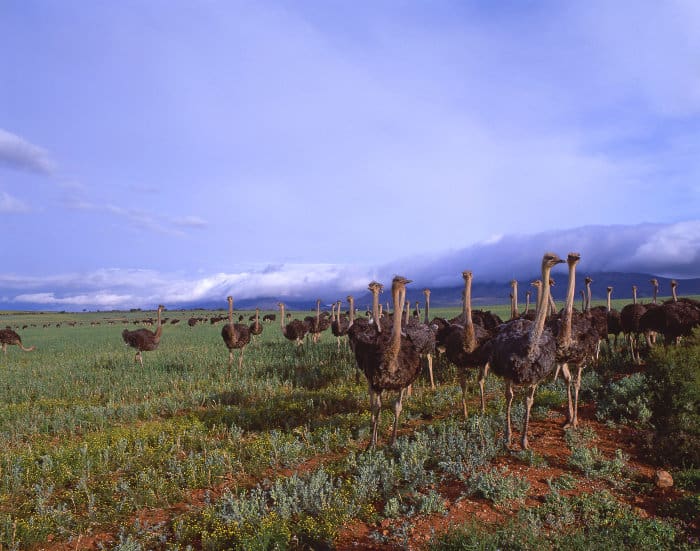
Did you know?
A single ostrich egg can provide an omelet for at least 10 people (or 12 moderate eaters).
Bon appétit!
8. Marabou Stork
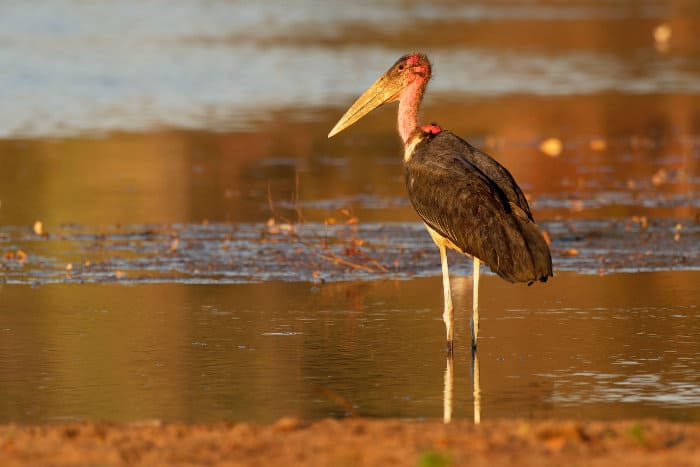
Birds don’t always come to mind when you think of ugly African animals . However, the enormous marabou stork isn’t the front runner when it comes to beauty.
They have featherless heads , scabby pink faces and a long reddish throat sac .
These large African birds have cloak-like feathers on their bodies, giving an eery appearance. It is a true scavenger that cleans out carcasses in search of bits and pieces of meat.
The marabou stork is frequently associated with African vultures but is quite different in behavior.
They can be scary .
One Africa Freak contributor used to come home to marabous picking the scraps off his verandah in Lake Naivasha , Kenya.
Average size : 4.5-8 kg; 1.2-1.3 m in length.
Call : Primarily silent, but can clap its beak during display.
Habitat : Mainly savannas and plains in the wild. They are also becoming present in towns: around dumps, fish markets, or abattoirs.
Range : From Senegal to Natal (South Africa); avoids rainforests and deserts.
9. (African) white-backed vulture

The white-backed vulture is Africa’s most widespread large vulture known as the “ garbage man ” of the savannah.
Often confused with the Cape vulture , the white-backed vulture is smaller in size and has a dark eye (Cape vultures have honey-colored eyes). Sadly, these endangered birds of Africa have a declining population .
Average size : 4.2-7.2 kg; 78-98 cm in length.
Call : Grunts and goose-like hisses and cackles .
Habitat : Open plains and wooded country where game is abundant.
Range : West Africa, Kenya, Tanzania , and throughout Southern Africa.
10. Red-billed oxpecker

The appointed beautician of the African bushveld .
The red-billed oxpecker has captivating yellow-ringed eyes that contrast with its olive-brown plumage. It is a medium-sized bird very similar to the yellow-billed oxpecker but with an all-red bill.
Red-billed oxpeckers are fairly common birds in Africa that you might spot enjoying a piggyback ride on other animals.
It is commonly mixed with large mammals ( buffalo , rhino , hippo ), as it removes unwanted parasites such as ticks and flies from the host’s body.
In fact, the red-billed oxpecker will clean the animal’s body thoroughly, even parts such as ears and nostrils.
It’s quite a spectacle to watch!
Average size : 0.5 kg; 20 cm in length.
Call : A scolding ‘churrrr’ and a hissing ‘zzzzzzist.’
Habitat : Savanna, in close proximity to cattle and game.
Range : Eritrea south through Eastern Africa to Eastern South Africa.
Admire African Savanna Birds on a Safari
These ten safari birds are relatively common and widespread. They are just an introduction , though.
To see many more small and big African birds, you should visit Africa and connect with your wild side.
Remember, you can customize safaris to your interests. So if you want to see birds in the African savanna, then tell your safari operator , so they can go searching for rare species.
About The Author
Michael Theys
Related posts.

17 fun lilac-breasted roller facts: Africa’s multicolored bird

9 cool African grey parrot facts
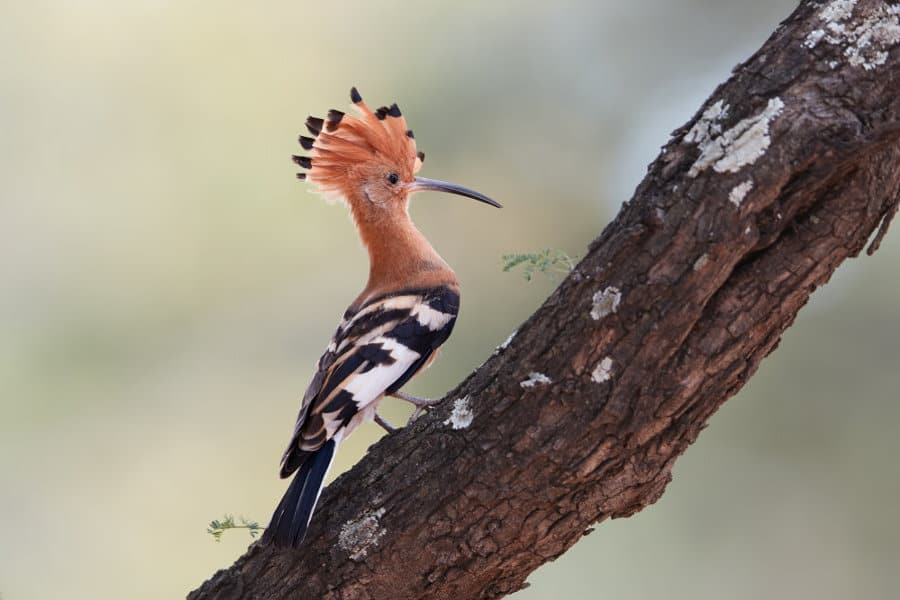
African hoopoe – Interesting facts on the striking Upupa africana species
Leave a comment cancel reply.
Your email address will not be published. Required fields are marked *
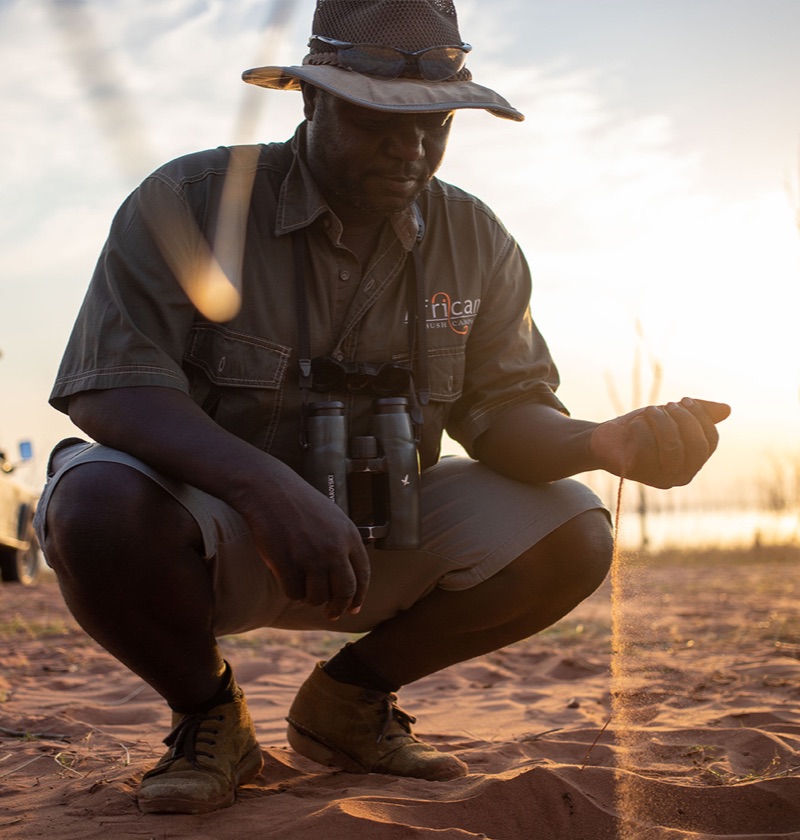
- In the Media
- ABC Foundation
- Our Ultimate Guides
- Live in Camp
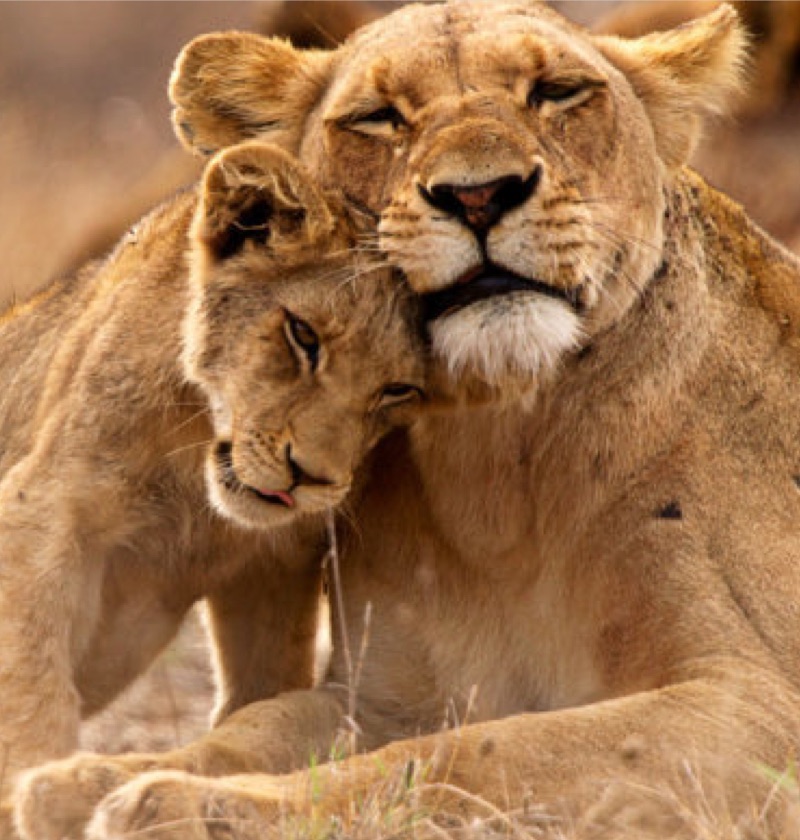
Safari Experiences
- Emerald Season Botswana
- Luxury Zimbabwe
- Luxury Okavango
- Icon Safari
Top Safaris
- Magic of Three Countries
- Authentic Mana Pools
- Luxury Zambezi
Impact Safaris
- 2025 Foundation Hosted Impact Safari
- Learner Development Safari
- Conservation Safari
- Women Empowerment Safari
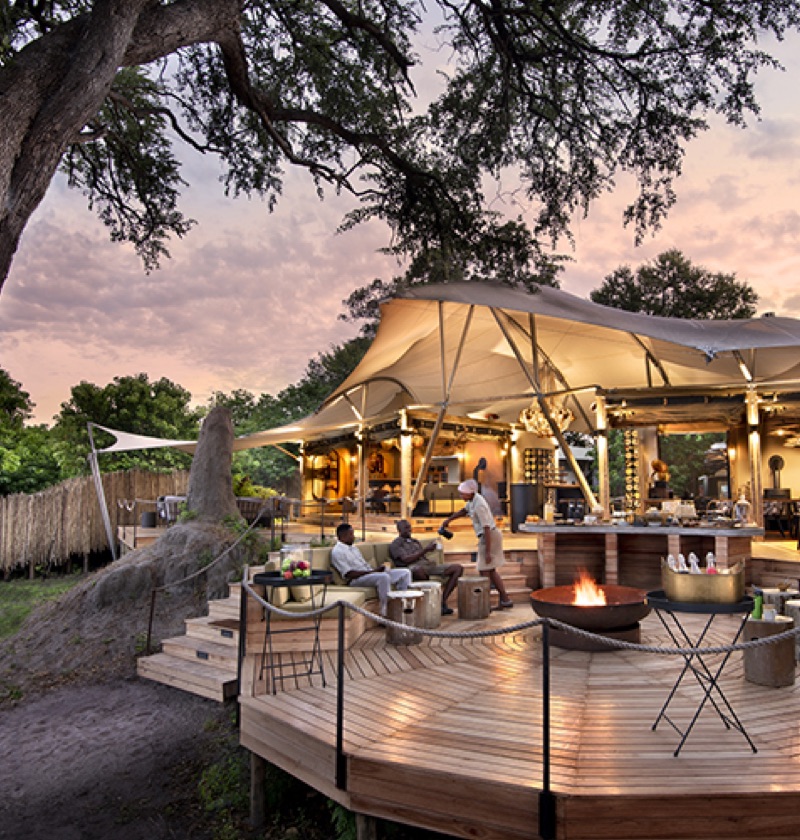
Expedition Experiences
- Zambezi Expeditions
- Somalisa Expeditions
- Linyanti Expeditions
Signature Experiences
- Linyanti Bush Camp
- Somalisa Camp
- Nyamatusi Camp
- Somalisa Acacia
- Khwai Leadwood
- Khwai Lediba
- Nyamatusi Mahogany
- Linyanti Ebony
- Bumi Hills Safari Lodge
- Khayelitshe House
Icon Experiences
- Thorntree River Lodge
- Atzaró Okavango

- Linyanti Wildlife Reserve
- Khwai Community Area
- Okavango Delta
- Lake Kariba & Matusadona
- Mana Pools National Park
- Hwange National Park
- Matobo National Park
- Victoria Falls
- Mosi-oa-Tunya National Park (Livingstone)
- Lower Zambezi
- Our Foundation
Get in Touch
Talk to a safari expert.

The African Hippopotamus: Everything You Need to Know
The African hippopotamus, or simply the hippo, is a large, semi-aquatic mammal native to sub-Saharan Africa. Hippos are found in sub-Saharan Africa, in a variety of habitats such as rivers, lakes, and other water bodies. They are primarily found in countries such as Tanzania, Kenya, Zambia, Zimbabwe, South Africa, and Uganda. However, their range has become more limited due to habitat loss and hunting. Conservation efforts are being made to protect hippos, including the establishment of protected areas and the enforcement of anti-poaching laws.
We’ve curated all the facts about these semi-aqautic mammals and put together everything you need to know about the African Hippopotamus
Hippos are large, heavy-bodied animals, with short legs and a barrel-shaped torso. They have a massive head, a short tail, and four toes on each foot, with each toe ending in a hoof-like nail. The African hippos are the largest land animals, weighing up to 3,000 pounds. The average adult male hippo weighs about 3,500 pounds and the average adult female hippo weighs about 2,500 pounds.
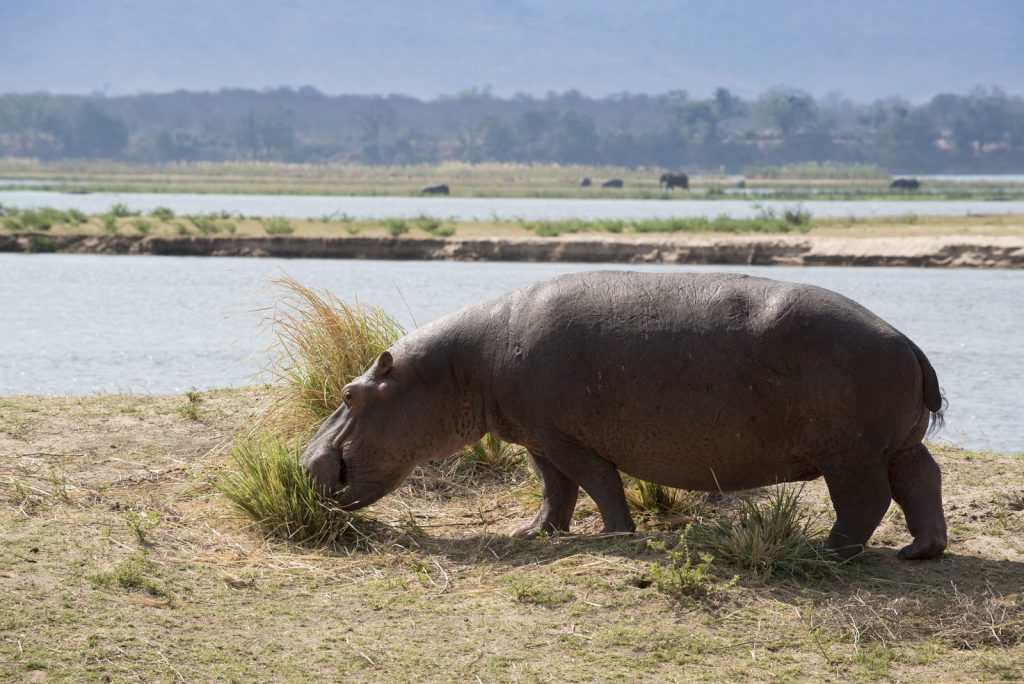
They have four short legs, each with four toes that are webbed and end in hooves, which help them navigate through the water. Their skin is hairless and gray or brown in color, with some pinkish areas around the eyes, mouth, and inside the ears. Hippos also have a short, stumpy tail, and their eyes, nostrils, and ears are positioned on the top of their head, allowing them to see, hear, and breathe while mostly submerged in water.
Hippos are semi-aquatic animals and are found in rivers, lakes, and other water bodies throughout sub-Saharan Africa. They spend most of their days submerged in water to avoid overheating and come out at night to feed on grass and other vegetation. Hippos can be found in a variety of habitats, from open savannas to dense forests, as long as there is plenty of water available. They prefer shallow areas of rivers and lakes where they can rest on the bottom with their heads above water. Some hippos have also been known to make their homes in man-made water bodies such as reservoirs and dams. The specific habitat of hippos varies depending on their location, but they are primarily found in countries such as Tanzania, Kenya, Zambia , Zimbabwe , South Africa, and Uganda.
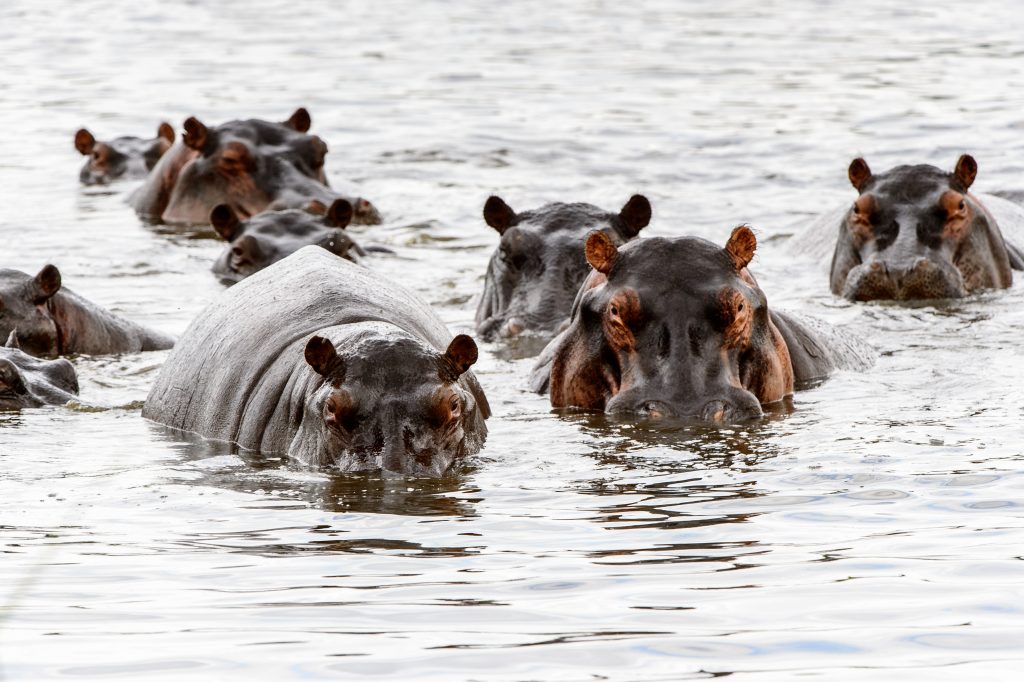
Hippos share their habitat with a variety of other animals in sub-Saharan Africa. In fact, they are considered a keystone species, as their presence in a river or lake ecosystem can have a significant impact on the other species that live there. Hippos create pathways through the vegetation and keep the waterways open by creating channels, which can benefit other aquatic animals. They also produce large amounts of dung, which is a valuable source of nutrients for fish and other aquatic organisms.
Some of the other animals that share the habitat of hippos include crocodiles, various species of fish, birds such as herons and storks, and other mammals such as buffalo, elephants, and zebras. However, hippos can be aggressive towards other animals, especially when they feel threatened or when competing for resources, so they are generally not considered a friendly neighbor in the animal kingdom.
Hippos are primarily nocturnal animals and spend most of their days submerged in water to keep cool and avoid the sun. At night, they emerge from the water to graze on grass and other vegetation. They are social animals and live in groups of up to 30 individuals, called pods or bloats, that are usually led by a dominant male.

They are known for their aggressive behavior, particularly when they feel threatened or are defending their territory or young. They have been known to attack boats and humans who come too close to their territory, and their powerful jaws and sharp teeth can cause serious injuries or even death. Despite their reputation for aggression, hippos are also capable of showing affection towards their young and social bonding between group members.
Hippos communicate with each other through vocalizations such as grunts, bellows, and growls, and also use body language to communicate. They mark their territory by defecating and spraying their dung with their tails, and also use their tails to create underwater turbulence as a form of communication.

Have You Booked Your Family Safari Yet?
Get started
Reproduction
Hippos are polygynous, which means that one male will mate with multiple females. The mating behavior of hippos can be aggressive and involves displays of dominance by males. Male hippos will fight with each other for access to females, and the winner will assert his dominance over the other males by vocalizing, displaying, and even charging them.
Once a male hippo has established dominance, he will attempt to mate with receptive females within his territory. Females become sexually mature at around 5-6 years of age, while males reach sexual maturity at around 7-8 years of age. The gestation period of hippos is around 8 months, and females usually give birth to a single calf, which they will nurse for up to a year.
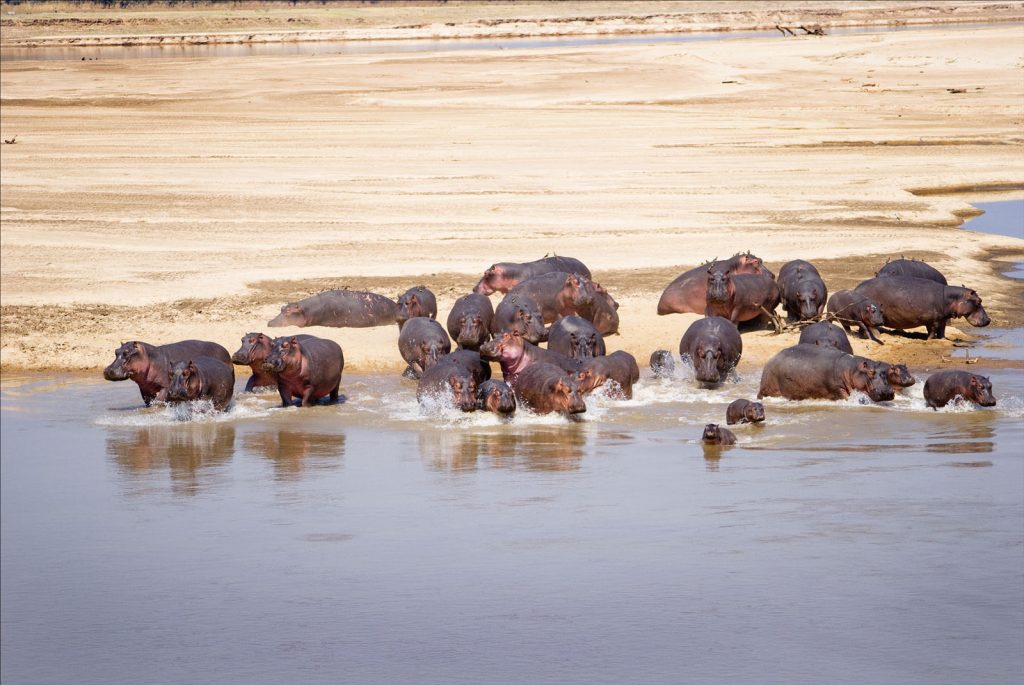
During mating season, male hippos will follow receptive females closely and may mount them repeatedly in an attempt to mate. This behavior can be quite aggressive and often involves vocalizations, displays of dominance, and occasional physical combat between males. After mating, the male will leave the female and return to his territory, while the female will care for the offspring on her own.
Conservation
Hippos are considered vulnerable by the International Union for Conservation of Nature (IUCN), which means that they are at risk of becoming endangered if current trends continue. The main threats to hippo populations include habitat loss due to human activities, hunting for meat and ivory, and water pollution.
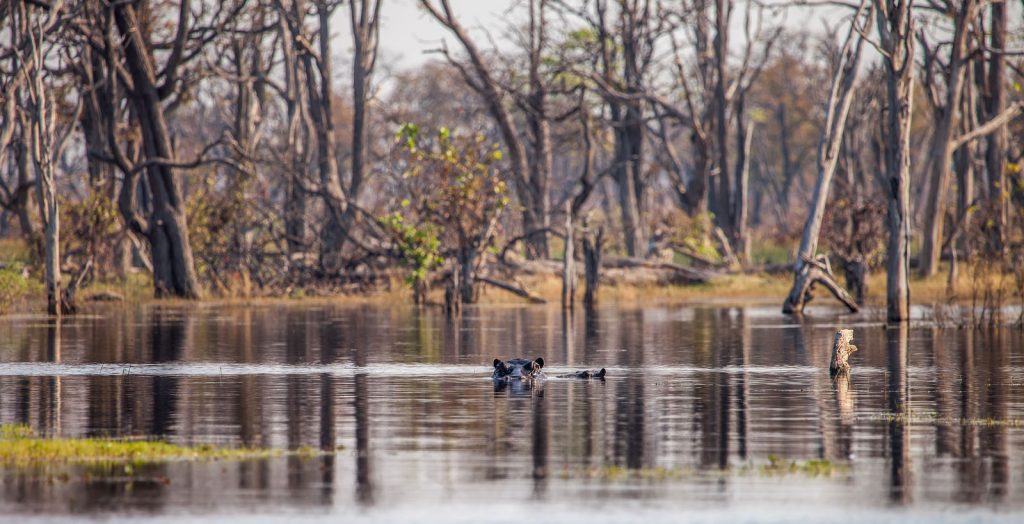
To conserve hippo populations, several measures have been taken. Protected areas have been established in several countries to provide habitat and protection for hippo populations. Hunting of hippos has been banned in many countries, and efforts are being made to enforce these bans. Additionally, efforts are being made to reduce pollution in waterways where hippos live.
Conservation organizations are also working to raise awareness about the importance of protecting hippo populations and their habitat. Ecotourism can provide an economic incentive for local communities to support conservation efforts, and many safari companies offer hippo viewing tours that provide a sustainable alternative to hunting.
What do hippos eat?
Hippos are herbivores and mainly eat grass and other vegetation, although they have been known to occasionally consume small amounts of fruit and even carrion.
How long do hippos live?
Hippos can live up to 40-50 years in the wild.
Are hippos dangerous?
Yes, hippos can be dangerous and are responsible for more human deaths in Africa than any other large animal. They are known for their aggressive behavior and can attack humans who come too close to their territory or young.
How fast can hippos run?
Despite their large size, hippos are surprisingly fast and can run at speeds of up to 30 km/h (18 mph) on land.
What is a group of hippos called?
A group of hippos is called a pod or a bloat.
Do hippos hybernate?
No, hippos do not hibernate, but they do reduce their activity levels during the colder months to conserve energy.
What are baby hippos called?
Baby hippos are called calves.
What is the biggest threat to hippos?
The biggest threat to hippos is habitat loss due to human activities such as agriculture, dam building, and logging. They are also sometimes hunted for their meat and ivory teeth.
Enquire Now
Start Planning Your Safari
" * " indicates required fields
Please note that all our camps are exclusively all-inclusive experiences; all meals, activities, and accommodation are included in your safari. T&Cs apply.
Agents Portal Login
Username or Email Address
Remember Me
Newsletter sign up
National Geographic content straight to your inbox—sign up for our popular newsletters here

17 unforgettable African safaris
Set off into the wild and see the world like never before with this guide to the best experiences in 11 countries.
Chobe National Park in Botswana holds one of Africa’s largest elephant populations.
What images come to mind when you hear the words “African safari”? Sitting in the bush on a moonlit night, so close to a lion that you can feel the rumble of its roar in your chest?
Many travelers might conjure up visions of tented camps, gourmet meals under a baobab tree, game drives through golden savanna, and sundowners at the end of the day. But safaris can also involve self-guided rental cars , game walks, and fly-fishing. Safaris can be as varied as the continent of Africa itself.
One recent trend: expeditions that enlist travelers in the fight to save endangered wildlife. Tourists make a difference by joining rhino or lion conservationists at work in South Africa or accompanying researchers working on a chimpanzee habituation project in Kibale National Park in Uganda . ( Read about the dark truth behind wildlife tourism. )

Three zebras line a waterhole in South Africa's Kruger National Park.
No matter where you go and what type of safari you choose, timing is key. Once you’ve narrowed your options, look into the best time to visit. South Africa’s summer (December through February), for example, is prime safari season in that region. You’ll still see wildlife if you go during South Africa’s winter (June through August), but pack a jacket, as temperatures can be chilly, especially before the sun rises.
Set off into the wild and see the world like never before with our guide to top safari experiences in 11 African countries.

Spot animals in these natural wonders.
South Africa
Kruger National Park: South Africa ’s largest game reserve, Kruger National Park makes a perfect home base for self-guided and first-time safaris. Stay in one of the park’s fenced camps, such as the Crocodile Bridge Rest Camp on the northern bank of the Crocodile River. Head into the bush early to explore the Southern Circle, famous for its competing lion prides and their varied hunting practices. Don’t miss the nearby hippo pool, but be sure to stay in your car outside of the camp. ( Take a solo safari through South Africa’s wild grasslands. )
Hazyview: Not far from Kruger’s southwestern Phabeni Gate, Hazyview is a family-friendly hub for horseback safaris, zip-lining, safari golf, and trout fishing. Check in to one of the lodges, such as Hippo Hollow Country Estate , and then head out into the Kruger before sunrise on a self-guided game drive to scout lions and white rhinos. Break for lunch in the town of Skukuza.
Timbavati Private Nature Reserve: The rugged Timbavati is one of the private nature reserves that make up the greater Kruger area. Guests can choose from eight lodges there. An upscale chalet at fence-free Simbavati Safari Lodges , for example, is perfect for families. Wake up early for game drives, perhaps to search for African wild dogs . Mid-morning, kids head into the bush for a scavenger hunt with a guide.
Grootbos Private Nature Reserve: Animals aren’t the only sights to track on safari. In South Africa’s Western Cape region, wildflowers provide the dazzle. The two lodges at Grootbos , part of the National Geographic Unique Lodges of the World , sit amid the smallest of the world’s six floral kingdoms, home to some 800 plant species. Watch for sharks and southern right whales from your suite’s deck. ( See the world’s best places for flowers. )

Grootbos Private Nature Reserve, located in South Africa’s Western Cape, offers a "flower safari" to guests.
Hlane Royal National Park: Head to Swaziland , a country landlocked between South Africa and Mozambique , to see Hlane ’s fiercely protected rhinos and marabou storks. Stay in one of the park’s two lodges, Ndlovu Camp or Bhubesi, and enjoy self-guided drives on the safe game-viewing roads that crisscross the park’s flat terrain. Spot lions, hyenas, giraffes, and vulturess, then picnic at the Mahlindza water hole.
Central Kalahari Game Reserve: Black-maned Kalahari lions roam this reserve in central Botswana . Stay just north of the reserve at Deception Valley Lodge , where you can watch magical sunsets dip into the horizon from the deck of your chalet.
Chobe National Park: To the north of Central Kalahari, Chobe National Park is home to one of Africa’s largest elephant populations. And Chobe Game Lodge boasts the only all-female safari guide team in Africa. ( Meet the all-female anti-poaching unit saving rhinos and other wildlife. )

Elephants enjoy a sunny day in Botswana’s Chobe National Park.
Hwange National Park: All aboard the Elephant Express to tour the Ngamo Forest Area and Hwange National Park, known for its pachyderms and 400-plus species of birds. The two-hour safari rail trip is easily accessible to Imvelo Safari Lodges’ Bomani Tented Lodge or Camelthorn Lodge . Check out the game-viewing underground hide at nearby Stoffie’s Pan. North from Hwange, a four-hour drive or a one-hour flight gets you to regal Victoria Falls, a thundering natural wonder you can hear long before you first catch sight of it.
Mana Pools National Park: Try a river-based safari in a kayak at this remote park. The best time to go may be in April, when large herds of elephants, buffalo, kudu, and the elusive eland return to the four (or mana in the local language) large permanent pools along the south bank of the Zambezi River after the rainy season. Accommodations in the park include lodges, thatched chalets, and campsites.
Namib Desert: A safari here means brilliant stargazing, silky sand, age-old views, and resilient desert animals such as oryx, bat-eared foxes, Burchell’s zebras, and loads of lizards. Stay at & Beyond’s Sossusvlei Desert Lodge , located at the desert’s eastern edge. Explore the Namib dunes on a quad bike, and hike a craggy slope to see ancient rock paintings in a nearby cave, making sure to pack water, a hat, and sunscreen. ( See eerie photos of a Namibian ghost town. )
Gorongosa National Park: Located in central Mozambique , Gorongosa has been brought back to life after suffering the devastations of many years of civil conflict. Today, when you visit, you become a part of one of Africa’s most successful wildlife restoration stories. Home to floodplains and preserved palm forests, Gorongosa has an amazing diversity of wildlife, from antelope to primates and huge Nile crocodiles, as well as lions, elephants, and hippos.

A female crocodile guards her nest of eggs beside the Mussicadzi River in Mozambique's Gorongosa National Park.
Selous Game Reserve: Visit this off-the-beaten-track and tranquil reserve in southern Tanzania for walking safaris and traditional game drives. Then cruise the Rufiji River to watch for elephants, hippos, lions, leopards, and brindled gnu. Stay at Beho Beho , a hilltop lodge that also has secluded tree-house accommodations for the extra adventurous.
Serengeti National Park: At Asilia’s Namiri Plains camp in northern Tanzania, visitors become part of the migration as they travel in a luxury mobile camp alongside herds of wildebeests, zebras, and gazelles. Walking safaris get you closer to the action, with veteran Serengeti safari guides giving the play-by-play. The animals—often stalked by big predators, such as lions and cheetahs—follow one of Earth’s most ancient routes. And if you come too close to an animal, never run. Move away quietly.
Olare Motorogi Conservancy: Cross the border from Tanzania into southern Kenya for an iconic East African lodge experience at the Mara Plains Camp. About a 2.5-hour drive from the legendary Masai Mara National Reserve, the eco-friendly camp was built by National Geographic Explorers-in-Residence Dereck and Beverly Joubert with their partners at Great Plains Conservation . From camp, you’ll head out on safari to watch migrating zebras and wildebeests make exciting and risky river crossings. You may even see a few big cats. ( Experience an air safari through Kenya. )

A lioness takes in the view of Kenya's Olare Motorogi Conservancy.
Ragati Conservancy: Kenya may be a great place to see the migrations, but it’s also a surprisingly fantastic spot for fly-fishing. On the southern slopes of Mount Kenya (Africa’s second highest peak), the Ragati Conservancy has mountain streams stocked with glistening rainbow trout. What makes the Ragati worth the trip? Nat Geo photographer and fly fisherman Pete Muller says that while Idaho fishing is amazing, “anglers won’t encounter an elephant along the Lochsa!” Fishing in Kenya, he says, also gives fishing enthusiasts the chance to visit locations such as Aberdare National Park.
Rwanda/Uganda
Volcanoes National Park/kalinzu Forest Reserve: Rwanda ’s Volcanoes National Park allows a limited number of visitors per day to hike into the jungle to view endangered mountain gorillas up close, as they groom each other, play, and eat bamboo shoots and fruits. Keep your eyes open for golden monkeys too. Nat Geo Expeditions offers an itinerary that includes a gorilla trek, then heads north into Uganda for a chimpanzee trek through the lush Kalinzu Forest Reserve near Queen Elizabeth National Park. ( Here’s how to visit the endangered mountain gorillas of Uganda and Rwanda. )
Zakouma National Park: Intense wildlife experiences await at this park known for the number of animals that make it their home. A herd of more than 500 elephants and flocks of birds, such as the black-crowned crane, in the tens of thousands, congregate here. Zakouma had a tremendous comeback after enduring civil unrest in the region. Visit between December and April, and stay at traditional Camp Nomade, its tents decorated with local carpets and brass bells.
- Nat Geo Expeditions
Related Topics
- WILDLIFE WATCHING
You May Also Like

Free roam safari: a self-guided campervanning trip through South Africa & Eswatini

20 of the coolest travel adventures for 2024
For hungry minds.

5 game drive alternatives, from cycling to horse-riding

How locals are protecting the wildlife of the Queen Elizabeth Conservation Area
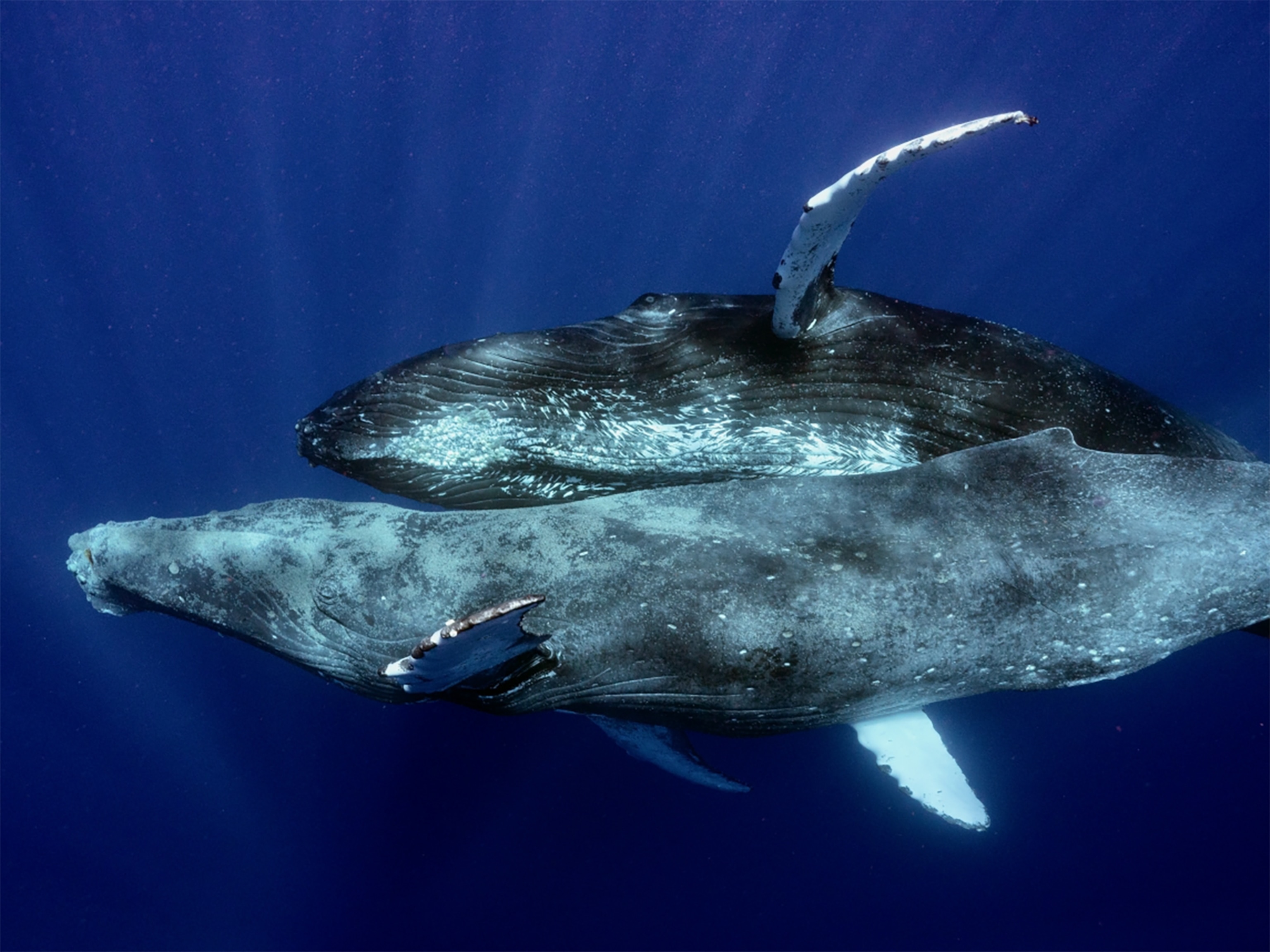
First-ever photos show humpback whales mating—and they’re males

Desert hikes and camping under the stars on a budget safari in Namibia

See any moose on your ski vacation? Here’s how to share the slopes with wildlife
- Environment
History & Culture
- History & Culture
- History Magazine
- Mind, Body, Wonder
- Coronavirus Coverage
- Paid Content
- Terms of Use
- Privacy Policy
- Your US State Privacy Rights
- Children's Online Privacy Policy
- Interest-Based Ads
- About Nielsen Measurement
- Do Not Sell or Share My Personal Information
- Nat Geo Home
- Attend a Live Event
- Book a Trip
- Inspire Your Kids
- Shop Nat Geo
- Visit the D.C. Museum
- Learn About Our Impact
- Support Our Mission
- Advertise With Us
- Customer Service
- Renew Subscription
- Manage Your Subscription
- Work at Nat Geo
- Sign Up for Our Newsletters
- Contribute to Protect the Planet
Copyright © 1996-2015 National Geographic Society Copyright © 2015-2024 National Geographic Partners, LLC. All rights reserved
Savannah Hippo Safaris

- See all photos

Similar Experiences

Most Recent: Reviews ordered by most recent publish date in descending order.
Detailed Reviews: Reviews ordered by recency and descriptiveness of user-identified themes such as waiting time, length of visit, general tips, and location information.
Savannah Hippo Safaris - All You Need to Know BEFORE You Go (2024)

40 Facts About Elektrostal
Written by Lanette Mayes
Modified & Updated: 02 Mar 2024
Reviewed by Jessica Corbett

Elektrostal is a vibrant city located in the Moscow Oblast region of Russia. With a rich history, stunning architecture, and a thriving community, Elektrostal is a city that has much to offer. Whether you are a history buff, nature enthusiast, or simply curious about different cultures, Elektrostal is sure to captivate you.
This article will provide you with 40 fascinating facts about Elektrostal, giving you a better understanding of why this city is worth exploring. From its origins as an industrial hub to its modern-day charm, we will delve into the various aspects that make Elektrostal a unique and must-visit destination.
So, join us as we uncover the hidden treasures of Elektrostal and discover what makes this city a true gem in the heart of Russia.
Key Takeaways:
- Elektrostal, known as the “Motor City of Russia,” is a vibrant and growing city with a rich industrial history, offering diverse cultural experiences and a strong commitment to environmental sustainability.
- With its convenient location near Moscow, Elektrostal provides a picturesque landscape, vibrant nightlife, and a range of recreational activities, making it an ideal destination for residents and visitors alike.
Known as the “Motor City of Russia.”
Elektrostal, a city located in the Moscow Oblast region of Russia, earned the nickname “Motor City” due to its significant involvement in the automotive industry.
Home to the Elektrostal Metallurgical Plant.
Elektrostal is renowned for its metallurgical plant, which has been producing high-quality steel and alloys since its establishment in 1916.
Boasts a rich industrial heritage.
Elektrostal has a long history of industrial development, contributing to the growth and progress of the region.
Founded in 1916.
The city of Elektrostal was founded in 1916 as a result of the construction of the Elektrostal Metallurgical Plant.
Located approximately 50 kilometers east of Moscow.
Elektrostal is situated in close proximity to the Russian capital, making it easily accessible for both residents and visitors.
Known for its vibrant cultural scene.
Elektrostal is home to several cultural institutions, including museums, theaters, and art galleries that showcase the city’s rich artistic heritage.
A popular destination for nature lovers.
Surrounded by picturesque landscapes and forests, Elektrostal offers ample opportunities for outdoor activities such as hiking, camping, and birdwatching.
Hosts the annual Elektrostal City Day celebrations.
Every year, Elektrostal organizes festive events and activities to celebrate its founding, bringing together residents and visitors in a spirit of unity and joy.
Has a population of approximately 160,000 people.
Elektrostal is home to a diverse and vibrant community of around 160,000 residents, contributing to its dynamic atmosphere.
Boasts excellent education facilities.
The city is known for its well-established educational institutions, providing quality education to students of all ages.
A center for scientific research and innovation.
Elektrostal serves as an important hub for scientific research, particularly in the fields of metallurgy, materials science, and engineering.
Surrounded by picturesque lakes.
The city is blessed with numerous beautiful lakes, offering scenic views and recreational opportunities for locals and visitors alike.
Well-connected transportation system.
Elektrostal benefits from an efficient transportation network, including highways, railways, and public transportation options, ensuring convenient travel within and beyond the city.
Famous for its traditional Russian cuisine.
Food enthusiasts can indulge in authentic Russian dishes at numerous restaurants and cafes scattered throughout Elektrostal.
Home to notable architectural landmarks.
Elektrostal boasts impressive architecture, including the Church of the Transfiguration of the Lord and the Elektrostal Palace of Culture.
Offers a wide range of recreational facilities.
Residents and visitors can enjoy various recreational activities, such as sports complexes, swimming pools, and fitness centers, enhancing the overall quality of life.
Provides a high standard of healthcare.
Elektrostal is equipped with modern medical facilities, ensuring residents have access to quality healthcare services.
Home to the Elektrostal History Museum.
The Elektrostal History Museum showcases the city’s fascinating past through exhibitions and displays.
A hub for sports enthusiasts.
Elektrostal is passionate about sports, with numerous stadiums, arenas, and sports clubs offering opportunities for athletes and spectators.
Celebrates diverse cultural festivals.
Throughout the year, Elektrostal hosts a variety of cultural festivals, celebrating different ethnicities, traditions, and art forms.
Electric power played a significant role in its early development.
Elektrostal owes its name and initial growth to the establishment of electric power stations and the utilization of electricity in the industrial sector.
Boasts a thriving economy.
The city’s strong industrial base, coupled with its strategic location near Moscow, has contributed to Elektrostal’s prosperous economic status.
Houses the Elektrostal Drama Theater.
The Elektrostal Drama Theater is a cultural centerpiece, attracting theater enthusiasts from far and wide.
Popular destination for winter sports.
Elektrostal’s proximity to ski resorts and winter sport facilities makes it a favorite destination for skiing, snowboarding, and other winter activities.
Promotes environmental sustainability.
Elektrostal prioritizes environmental protection and sustainability, implementing initiatives to reduce pollution and preserve natural resources.
Home to renowned educational institutions.
Elektrostal is known for its prestigious schools and universities, offering a wide range of academic programs to students.
Committed to cultural preservation.
The city values its cultural heritage and takes active steps to preserve and promote traditional customs, crafts, and arts.
Hosts an annual International Film Festival.
The Elektrostal International Film Festival attracts filmmakers and cinema enthusiasts from around the world, showcasing a diverse range of films.
Encourages entrepreneurship and innovation.
Elektrostal supports aspiring entrepreneurs and fosters a culture of innovation, providing opportunities for startups and business development.
Offers a range of housing options.
Elektrostal provides diverse housing options, including apartments, houses, and residential complexes, catering to different lifestyles and budgets.
Home to notable sports teams.
Elektrostal is proud of its sports legacy, with several successful sports teams competing at regional and national levels.
Boasts a vibrant nightlife scene.
Residents and visitors can enjoy a lively nightlife in Elektrostal, with numerous bars, clubs, and entertainment venues.
Promotes cultural exchange and international relations.
Elektrostal actively engages in international partnerships, cultural exchanges, and diplomatic collaborations to foster global connections.
Surrounded by beautiful nature reserves.
Nearby nature reserves, such as the Barybino Forest and Luchinskoye Lake, offer opportunities for nature enthusiasts to explore and appreciate the region’s biodiversity.
Commemorates historical events.
The city pays tribute to significant historical events through memorials, monuments, and exhibitions, ensuring the preservation of collective memory.
Promotes sports and youth development.
Elektrostal invests in sports infrastructure and programs to encourage youth participation, health, and physical fitness.
Hosts annual cultural and artistic festivals.
Throughout the year, Elektrostal celebrates its cultural diversity through festivals dedicated to music, dance, art, and theater.
Provides a picturesque landscape for photography enthusiasts.
The city’s scenic beauty, architectural landmarks, and natural surroundings make it a paradise for photographers.
Connects to Moscow via a direct train line.
The convenient train connection between Elektrostal and Moscow makes commuting between the two cities effortless.
A city with a bright future.
Elektrostal continues to grow and develop, aiming to become a model city in terms of infrastructure, sustainability, and quality of life for its residents.
In conclusion, Elektrostal is a fascinating city with a rich history and a vibrant present. From its origins as a center of steel production to its modern-day status as a hub for education and industry, Elektrostal has plenty to offer both residents and visitors. With its beautiful parks, cultural attractions, and proximity to Moscow, there is no shortage of things to see and do in this dynamic city. Whether you’re interested in exploring its historical landmarks, enjoying outdoor activities, or immersing yourself in the local culture, Elektrostal has something for everyone. So, next time you find yourself in the Moscow region, don’t miss the opportunity to discover the hidden gems of Elektrostal.
Q: What is the population of Elektrostal?
A: As of the latest data, the population of Elektrostal is approximately XXXX.
Q: How far is Elektrostal from Moscow?
A: Elektrostal is located approximately XX kilometers away from Moscow.
Q: Are there any famous landmarks in Elektrostal?
A: Yes, Elektrostal is home to several notable landmarks, including XXXX and XXXX.
Q: What industries are prominent in Elektrostal?
A: Elektrostal is known for its steel production industry and is also a center for engineering and manufacturing.
Q: Are there any universities or educational institutions in Elektrostal?
A: Yes, Elektrostal is home to XXXX University and several other educational institutions.
Q: What are some popular outdoor activities in Elektrostal?
A: Elektrostal offers several outdoor activities, such as hiking, cycling, and picnicking in its beautiful parks.
Q: Is Elektrostal well-connected in terms of transportation?
A: Yes, Elektrostal has good transportation links, including trains and buses, making it easily accessible from nearby cities.
Q: Are there any annual events or festivals in Elektrostal?
A: Yes, Elektrostal hosts various events and festivals throughout the year, including XXXX and XXXX.
Elektrostal's fascinating history, vibrant culture, and promising future make it a city worth exploring. For more captivating facts about cities around the world, discover the unique characteristics that define each city . Uncover the hidden gems of Moscow Oblast through our in-depth look at Kolomna. Lastly, dive into the rich industrial heritage of Teesside, a thriving industrial center with its own story to tell.
Was this page helpful?
Our commitment to delivering trustworthy and engaging content is at the heart of what we do. Each fact on our site is contributed by real users like you, bringing a wealth of diverse insights and information. To ensure the highest standards of accuracy and reliability, our dedicated editors meticulously review each submission. This process guarantees that the facts we share are not only fascinating but also credible. Trust in our commitment to quality and authenticity as you explore and learn with us.
Share this Fact:
- Client log in
Metallurgicheskii Zavod Electrostal AO (Russia)
In 1993 "Elektrostal" was transformed into an open joint stock company. The factory occupies a leading position among the manufacturers of high quality steel. The plant is a producer of high-temperature nickel alloys in a wide variety. It has a unique set of metallurgical equipment: open induction and arc furnaces, furnace steel processing unit, vacuum induction, vacuum- arc furnaces and others. The factory has implemented and certified quality management system ISO 9000, received international certificates for all products. Elektrostal today is a major supplier in Russia starting blanks for the production of blades, discs and rolls for gas turbine engines. Among them are companies in the aerospace industry, defense plants, and energy complex, automotive, mechanical engineering and instrument-making plants.
Headquarters Ulitsa Zheleznodorozhnaya, 1 Elektrostal; Moscow Oblast; Postal Code: 144002
Contact Details: Purchase the Metallurgicheskii Zavod Electrostal AO report to view the information.
Website: http://elsteel.ru
EMIS company profiles are part of a larger information service which combines company, industry and country data and analysis for over 145 emerging markets.
To view more information, Request a demonstration of the EMIS service

IMAGES
COMMENTS
All corporate and/or tour info is provided by Savanna Hippo Safaris, not SafariBookings. The tours offered by Savanna Hippo Safaris are subject to their terms & conditions. Average rating: 5/5 stars, based on 3 reviews. Savannah Hippo Safaris is a Kenyan owned Tour firm, born and brought up in Kenya. We have been in the tourism.
Savannah HIPPO Safaris, Mombasa, Kenya. 439 likes · 3 talking about this. Savannah Hippo safaris started in the year 2004 ,based in North coast Mombasa.We do ,Hotel bookings, air safaris,road...
Experience the continent's many wonders with our experts on trips to Tanzania,Kenya,Uganda, Rwanda, and more.Savannah Hippo safaris started in the year 2004 ,based in North coast Mombasa.We do ,Hotel bookings, air safaris,road safaris,car hire,dolphin trips ,bush tours. Mombasa, Kenya. Contact.
The safari drives were incredible; getting so close to all the animals. The camps we stayed in were amazing. I can't begin to say how amazing it was. There was a group of approx 14 of us and every single one of us would recommend Stanley and Savannah Hippo Safaris to everyone. I would definitely go back. Thanks once again Stanley and team.
Best time to see hippos in Akagera: Hippos can be seen throughout the year, but if you're combining a safari with gorilla trekking elsewhere in Rwanda, aim for June to September or mid-December to mid-February. Akagera Tours. 8. Kruger National Park, South Africa. Hippopotamus lying in the water, Kruger National Park.
Savanna safaris provide exceptional opportunities to see the 'Big 5' - lion, leopard, elephant, buffalo and rhino - as well as cheetah, wild dog, hippo, crocodile, an abundance of general game and over 400 bird species. The emphasis at Savanna is, first and foremost, on the safari experience, on the activities of the many rare and ...
Skip to main content. Review. Trips Alerts Sign in
In an area studded with dams that attract large herds of game, and traversing more than 10 000 hectares of prime bushveld, a Savanna safari provides exceptional opportunities to see the 'Big 5' - lion, leopard, elephant, buffalo and rhino - as well as cheetah, wild dog, hippo, crocodile, an abundance of general game and over 400 bird species.
Savannah Hippo Safaris. 8 reviews Nyali naivas Mombasa KE, Kenya +254 722 865836 savannahhipposafaris.com suggest an edit. Mombasa. Tour Operator. Savannah Hippo Safaris. Categories Tour Operator. Hours 00:00-24:00 . People also viewed. F. King's Tours & Safaris Ltd. Halgan Villas Palace. Coast Camping Tours & Safaris.
In an area studded with dams that attract large herds of game, and traversing more than 10 000 hectares of prime bushveld, a Savanna safari provides exceptional opportunities to see the 'Big 5' - lion, leopard, elephant, buffalo and rhino - as well as cheetah, wild dog, hippo, crocodile, an abundance of general game and over 400 bird species.
The hippo is a large and round ungulate that prefers spending most of its time in the water. While the word hippopotamus is Greek for "River Horse," hippos and horses are not closely related. In fact, the closes living relatives to the hippo are whales, dolphins, and pigs. Hippos are the third-largest land mammals, after elephants and rhinos.
1. African fish eagle. Undoubtedly Africa's most striking symbol, and Zambia 's national emblem, this is the ultimate bird to see on safari. If you haven't already guessed it by the name, their diet mainly includes fish. So you'll likely find these large African birds near open water bodies.
Hippos are large, heavy-bodied animals, with short legs and a barrel-shaped torso. They have a massive head, a short tail, and four toes on each foot, with each toe ending in a hoof-like nail. The African hippos are the largest land animals, weighing up to 3,000 pounds. The average adult male hippo weighs about 3,500 pounds and the average ...
Zimbabwe. Hwange National Park: All aboard the Elephant Express to tour the Ngamo Forest Area and Hwange National Park, known for its pachyderms and 400-plus species of birds. The two-hour safari ...
Night falls in the Serengeti-Mara savanna. The deep calls of lions resonate through the plains while a hippo lazily moves in the water hole nearby. A thick i...
South Africa. South Africa Home Kruger
Safari Itineraries that include Savanna Lodge. A Touch of South Africa. 8 days, 7 nights - $9,160 - $23,325. Classic South Africa. 11 days, 10 nights - $10,981 - $27,780. Grand South Africa Safari & City. 11 days, 10 nights - $10,252 - $26,234. Diverse South Africa. 11 days, 10 nights - $15,355 - $24,066.
The regular price without a discount is $169; AP and Disney Visa® card holders receive a 15 percent discount on most tours. (The usual discount for DVC members is also 15 percent.) Our savanna time was 4 p.m. and we were requested to check in 15 minutes early. We went to where we thought the check-in was, at the Curiosity Animal Tours Kiosk in ...
About. Experience the continent's many wonders with our experts on trips to Tanzania,Kenya,Uganda, Rwanda, and more.Savannah Hippo safaris started in the year 2004 ,based in North coast Mombasa.We do ,Hotel bookings, air safaris,road safaris,car hire,dolphin trips ,bush tours. Mombasa, Kenya.
In 1954, Elemash began to produce fuel assemblies, including for the first nuclear power plant in the world, located in Obninsk. In 1959, the facility produced the fuel for the Soviet Union's first icebreaker. Its fuel assembly production became serial in 1965 and automated in 1982. 1. Today, Elemash is one of the largest TVEL nuclear fuel ...
40 Facts About Elektrostal. Elektrostal is a vibrant city located in the Moscow Oblast region of Russia. With a rich history, stunning architecture, and a thriving community, Elektrostal is a city that has much to offer. Whether you are a history buff, nature enthusiast, or simply curious about different cultures, Elektrostal is sure to ...
Metallurgicheskii Zavod Electrostal AO (Russia) In 1993 "Elektrostal" was transformed into an open joint stock company. The factory occupies a leading position among the manufacturers of high quality steel. The plant is a producer of high-temperature nickel alloys in a wide variety. It has a unique set of metallurgical equipment: open induction ...
Moscow Region, Elektrostal, Yuzhny prospekt, 6к1, postal code 144004 — plot a route to the address in Yandex Maps. Find places nearby, check businesses inside and service organizations.